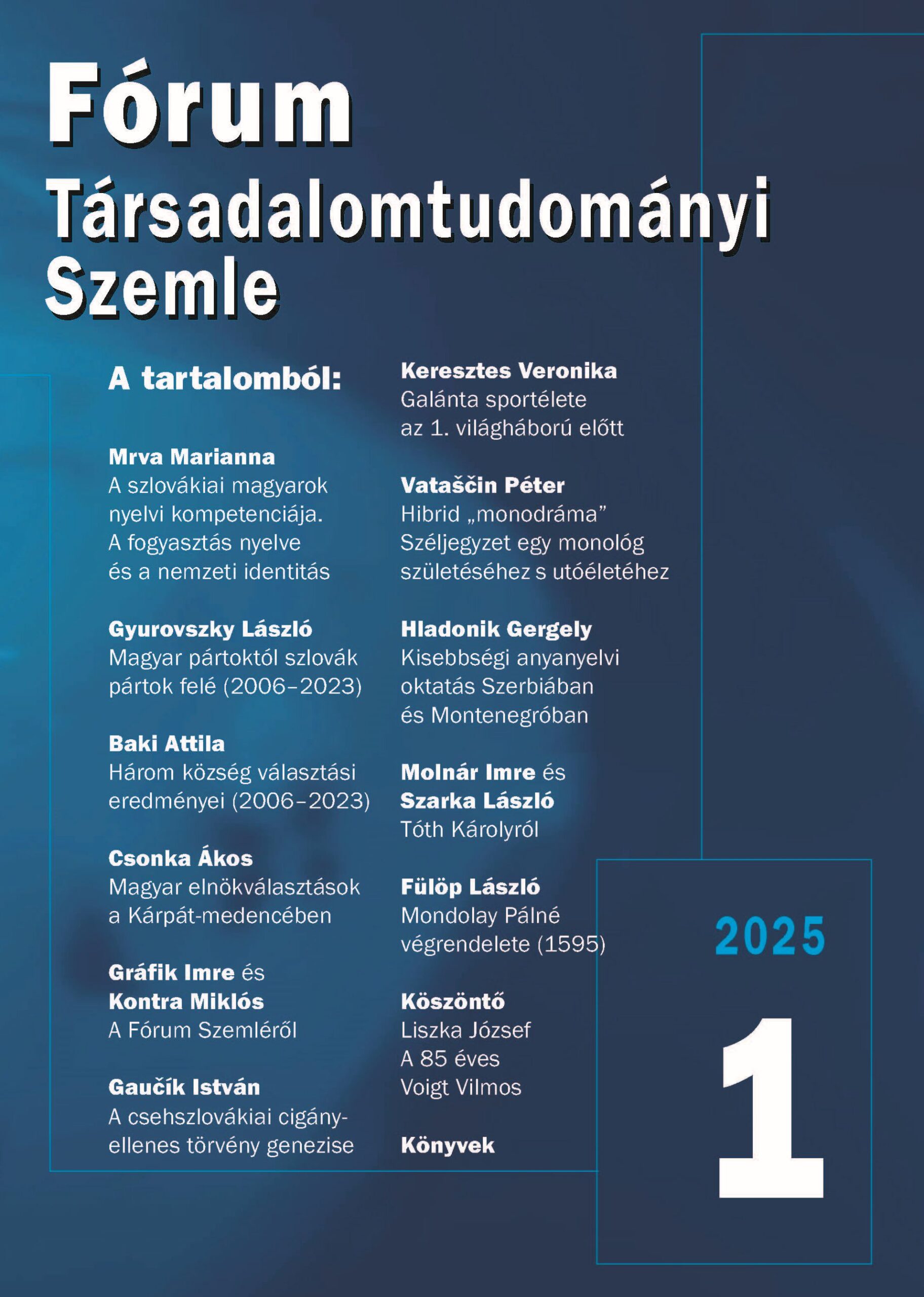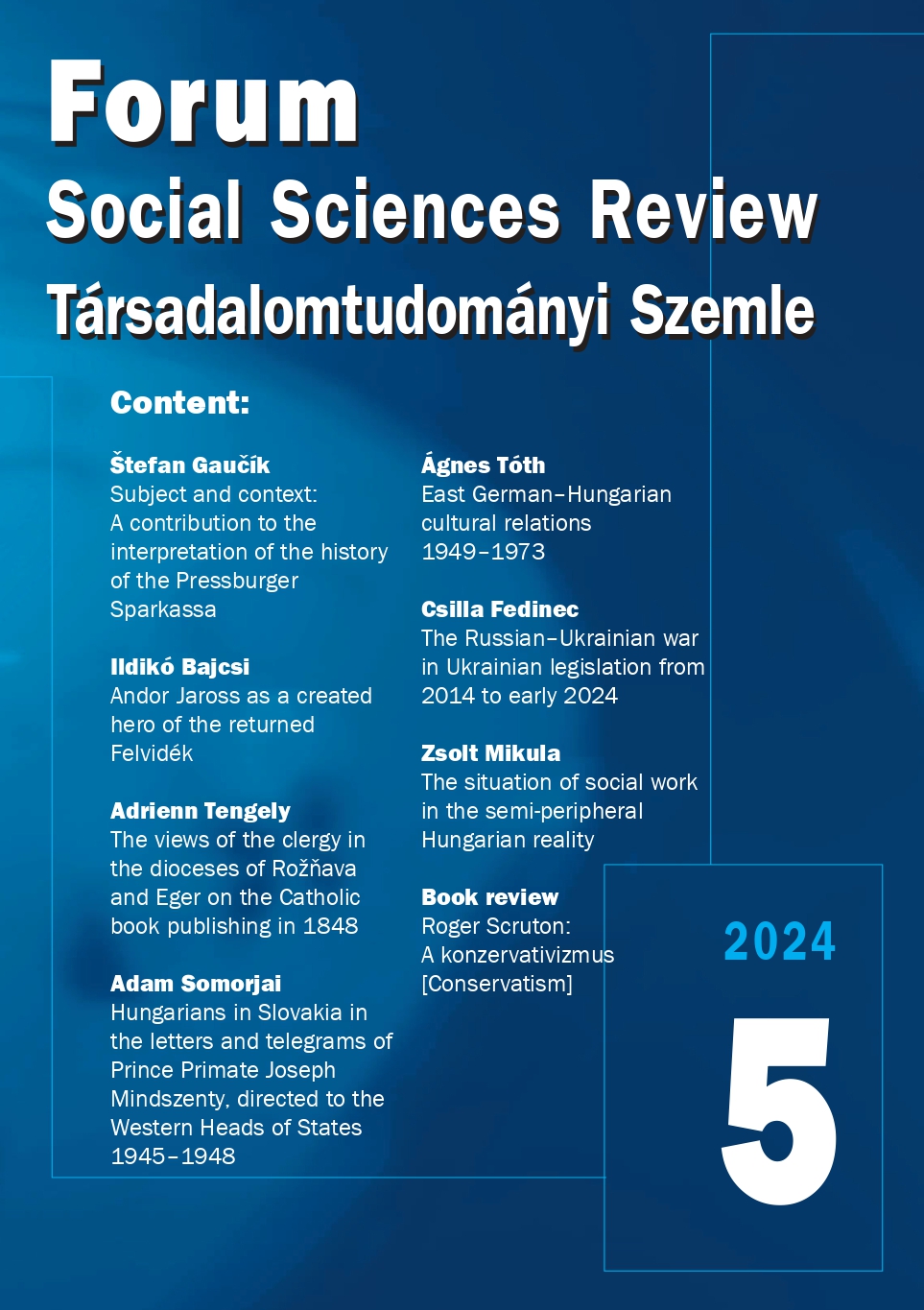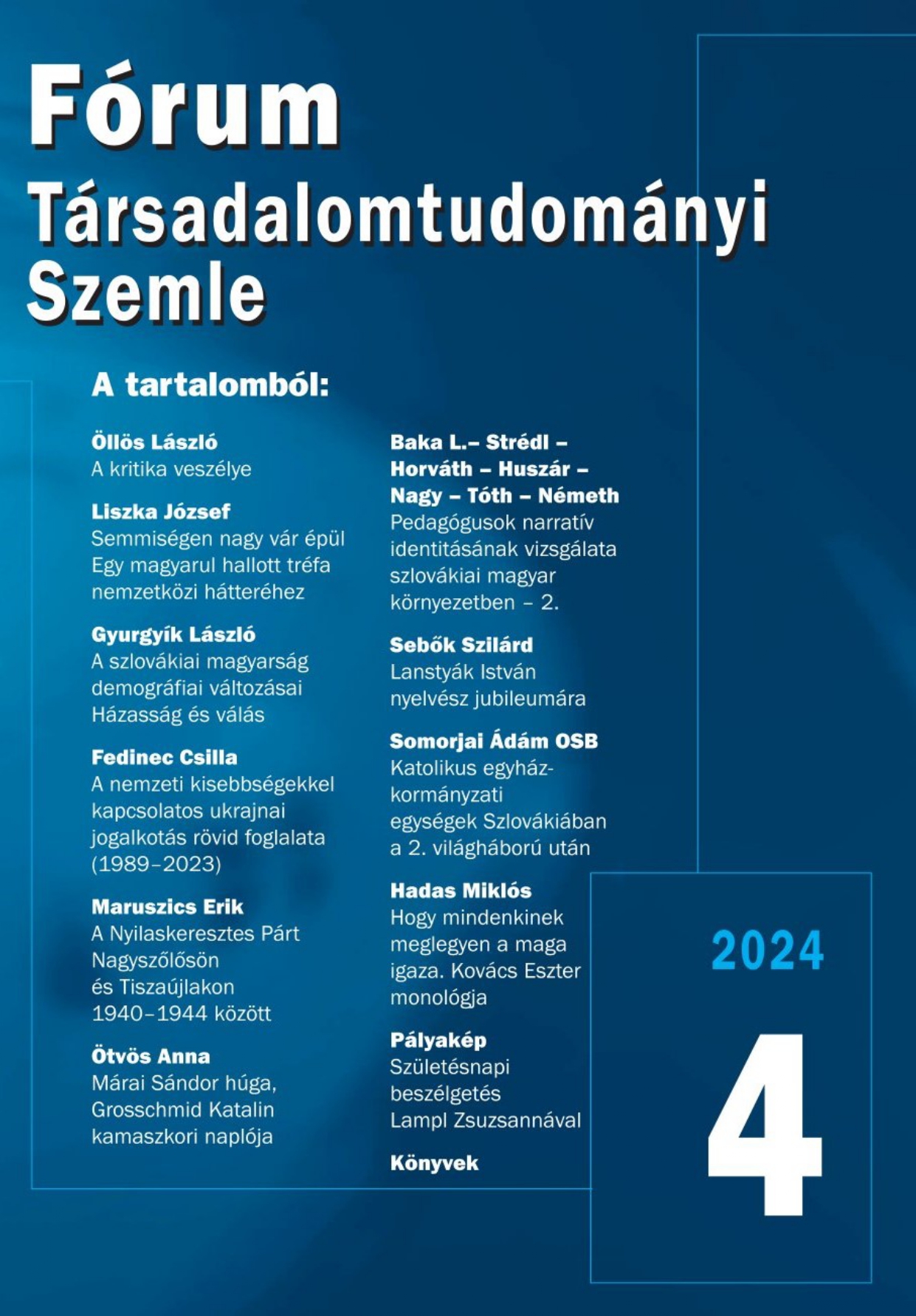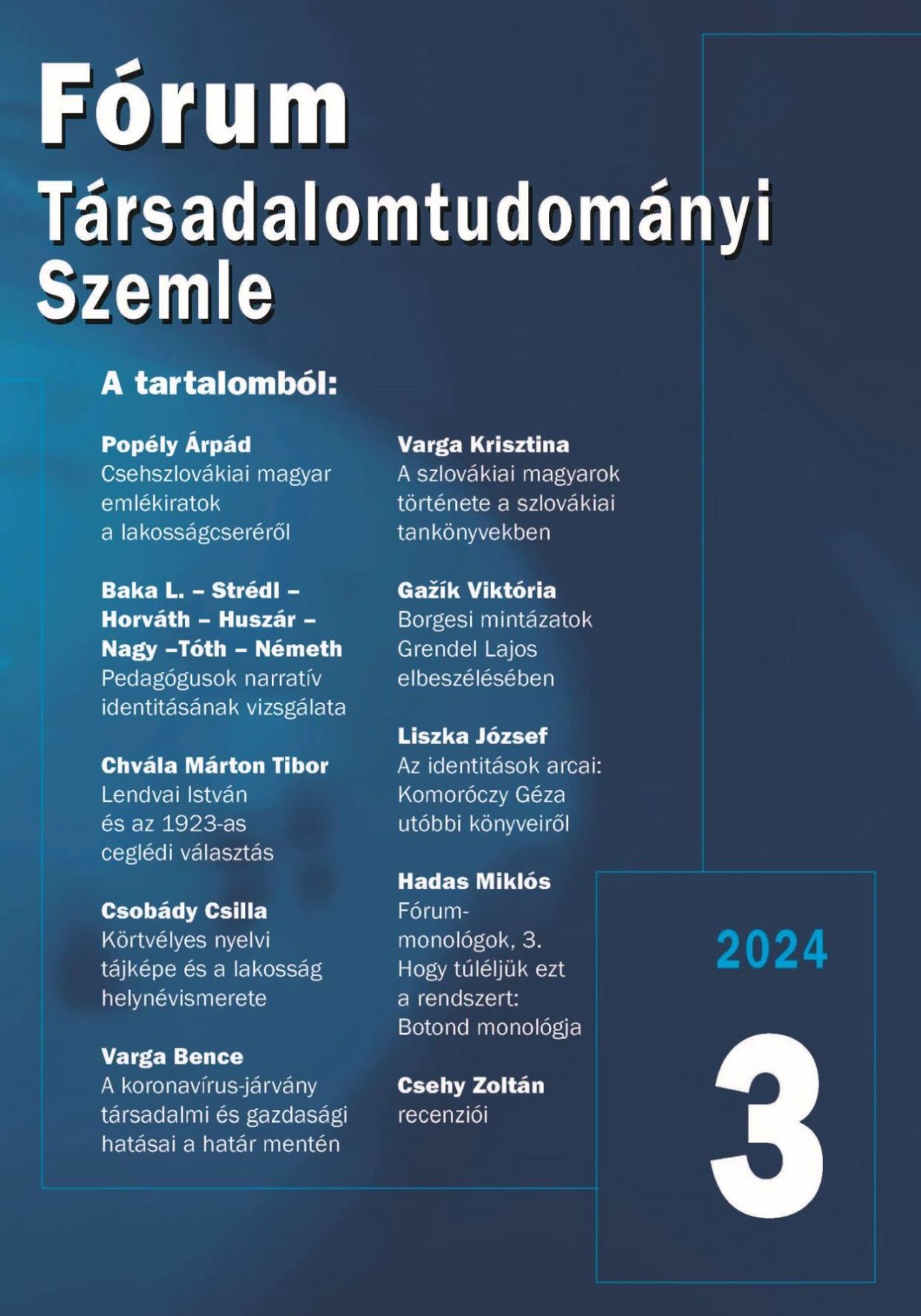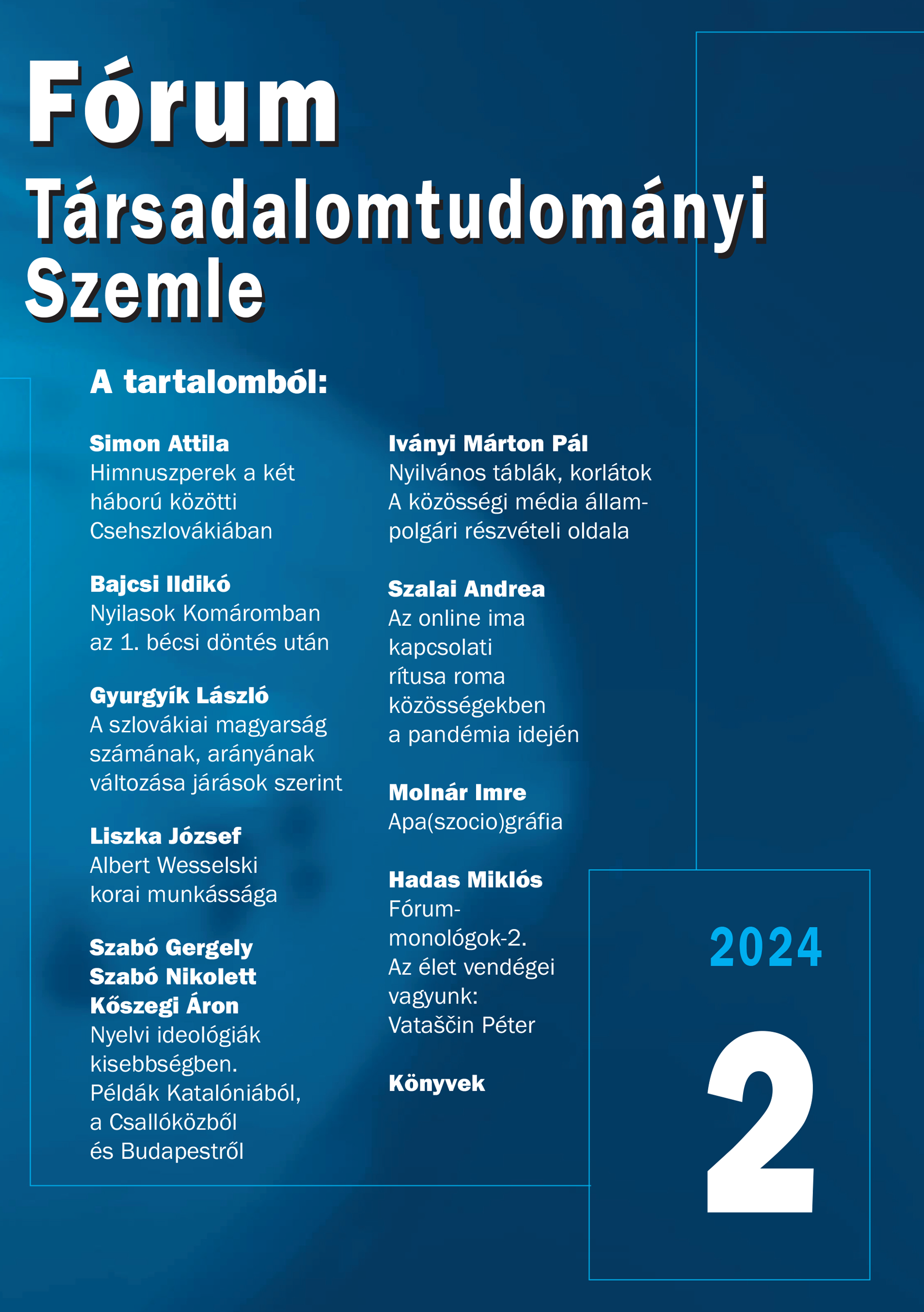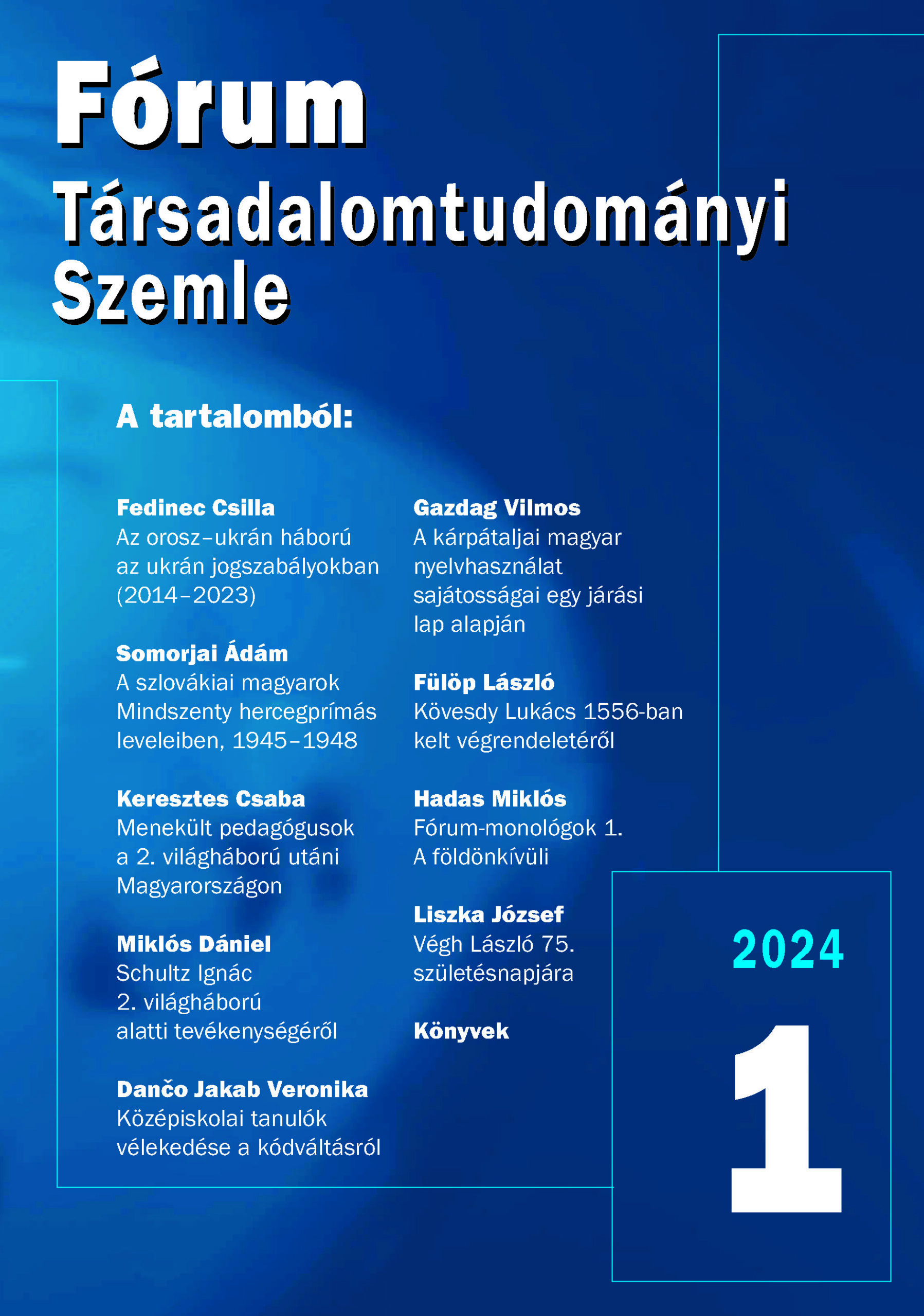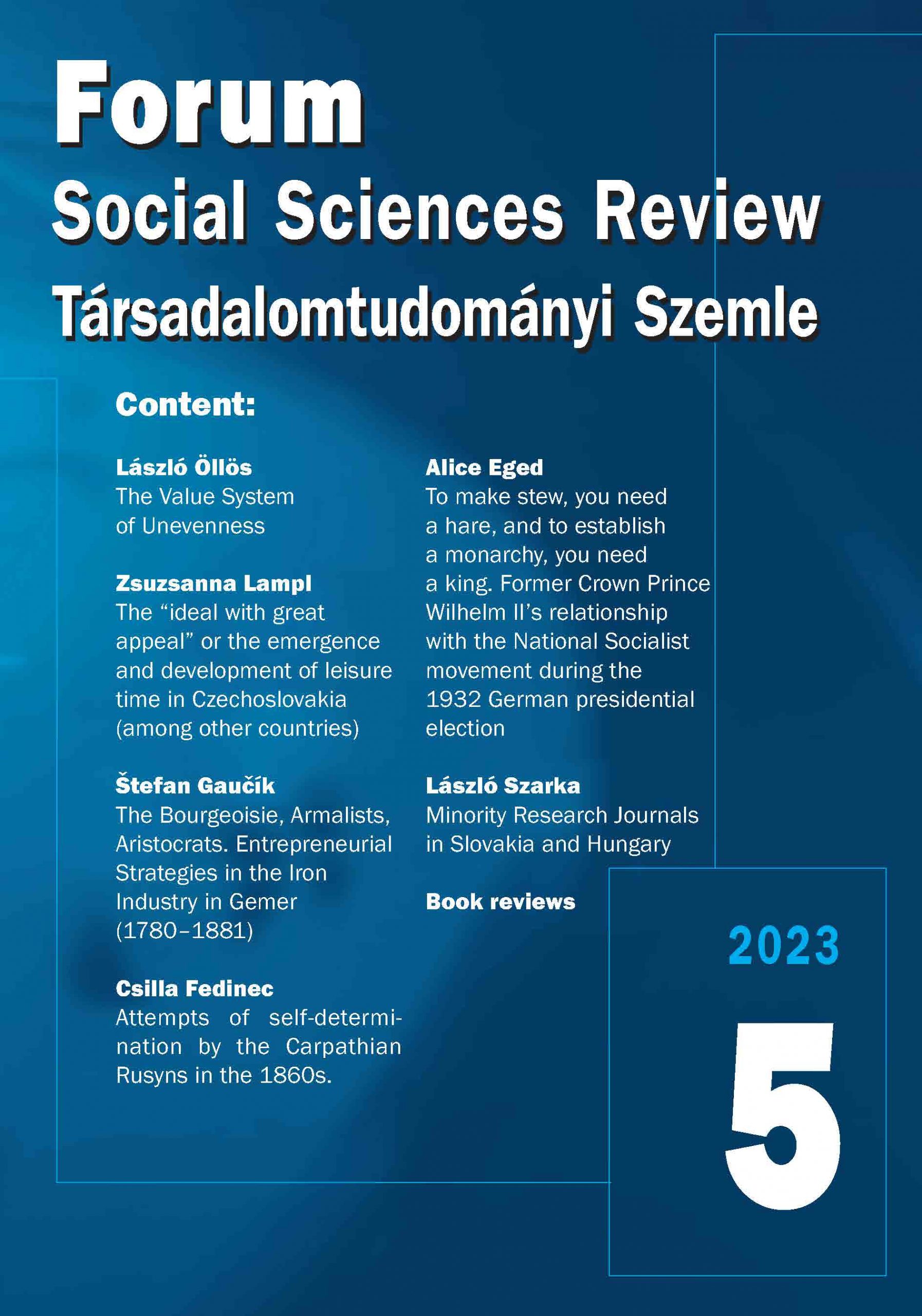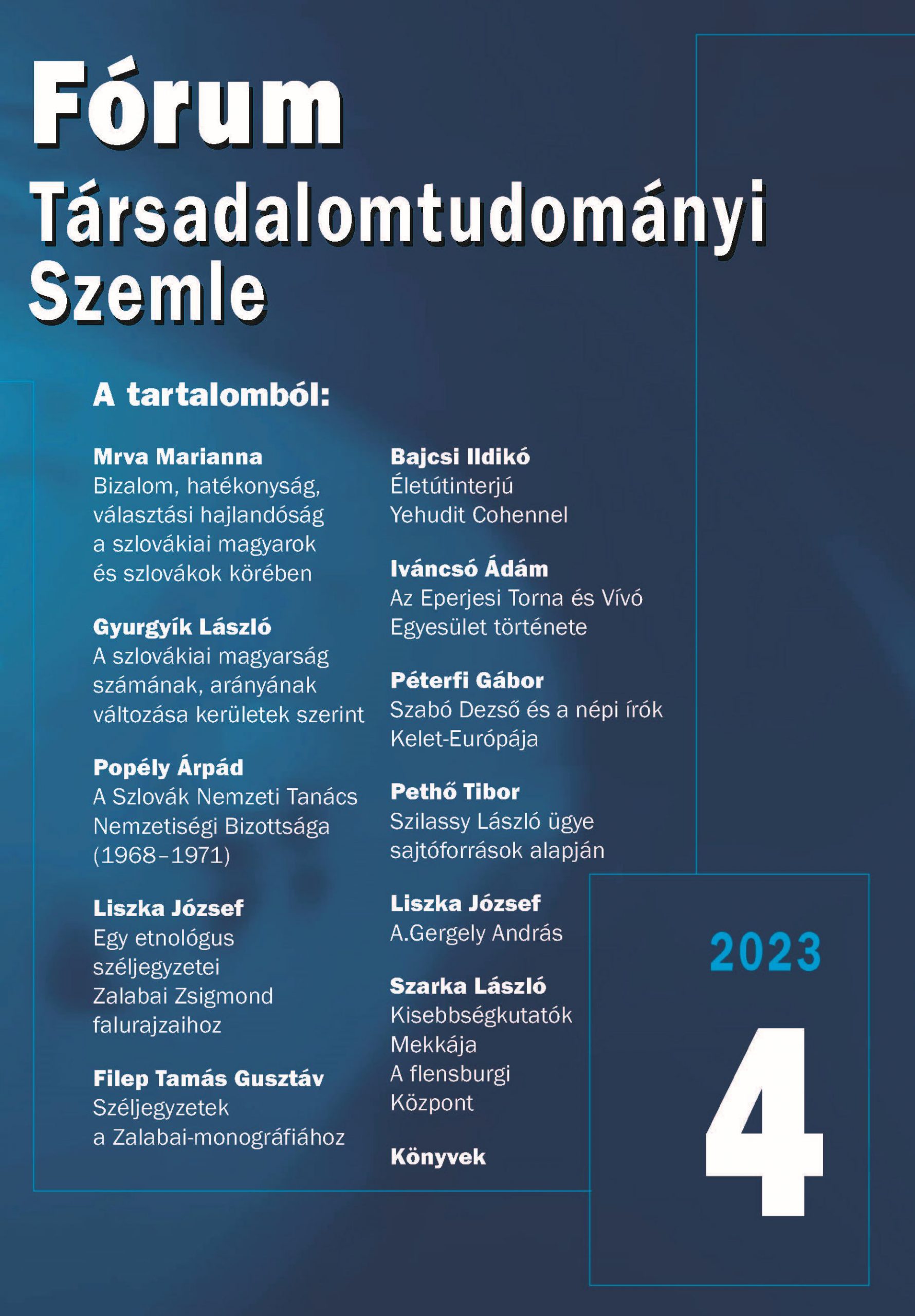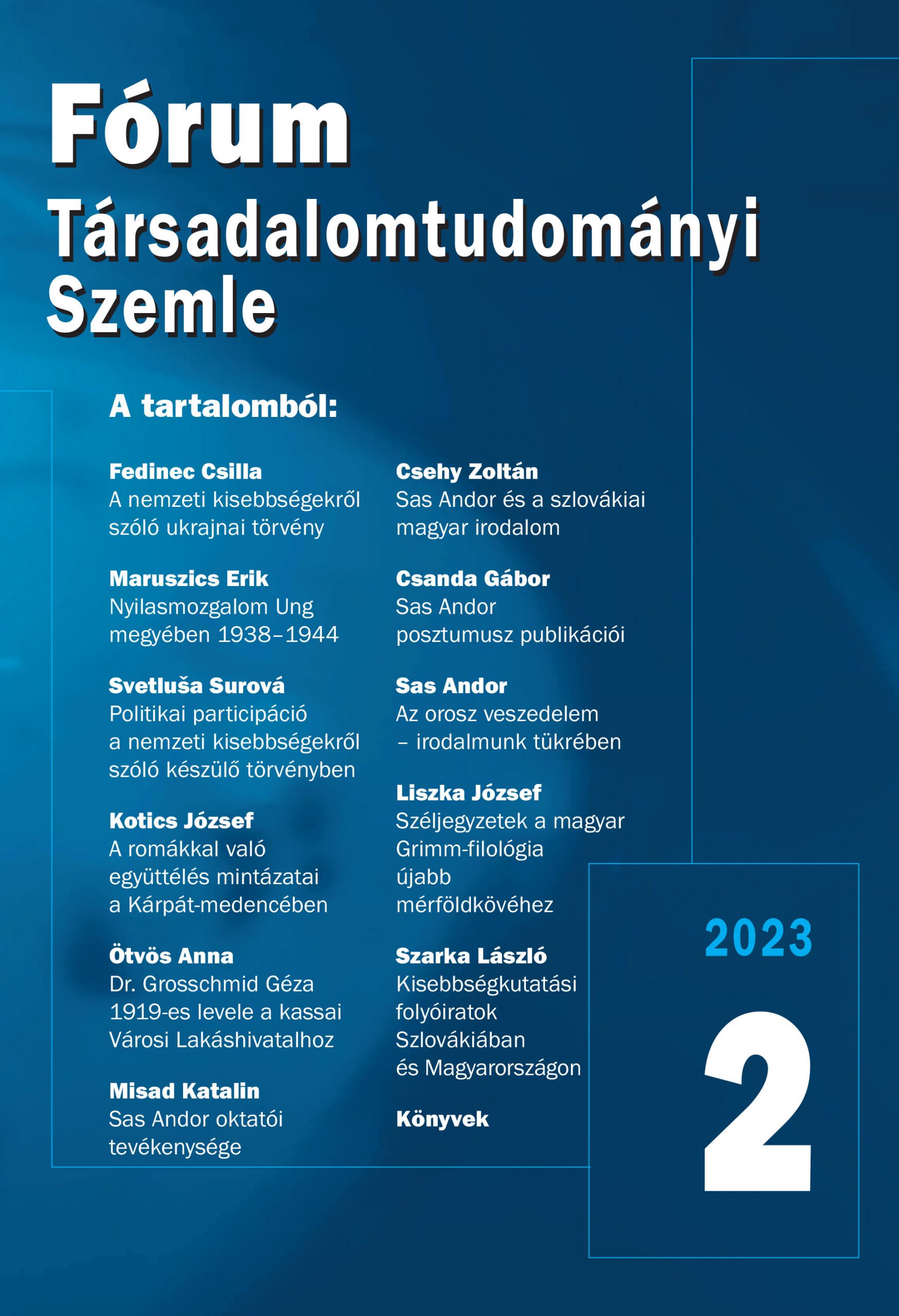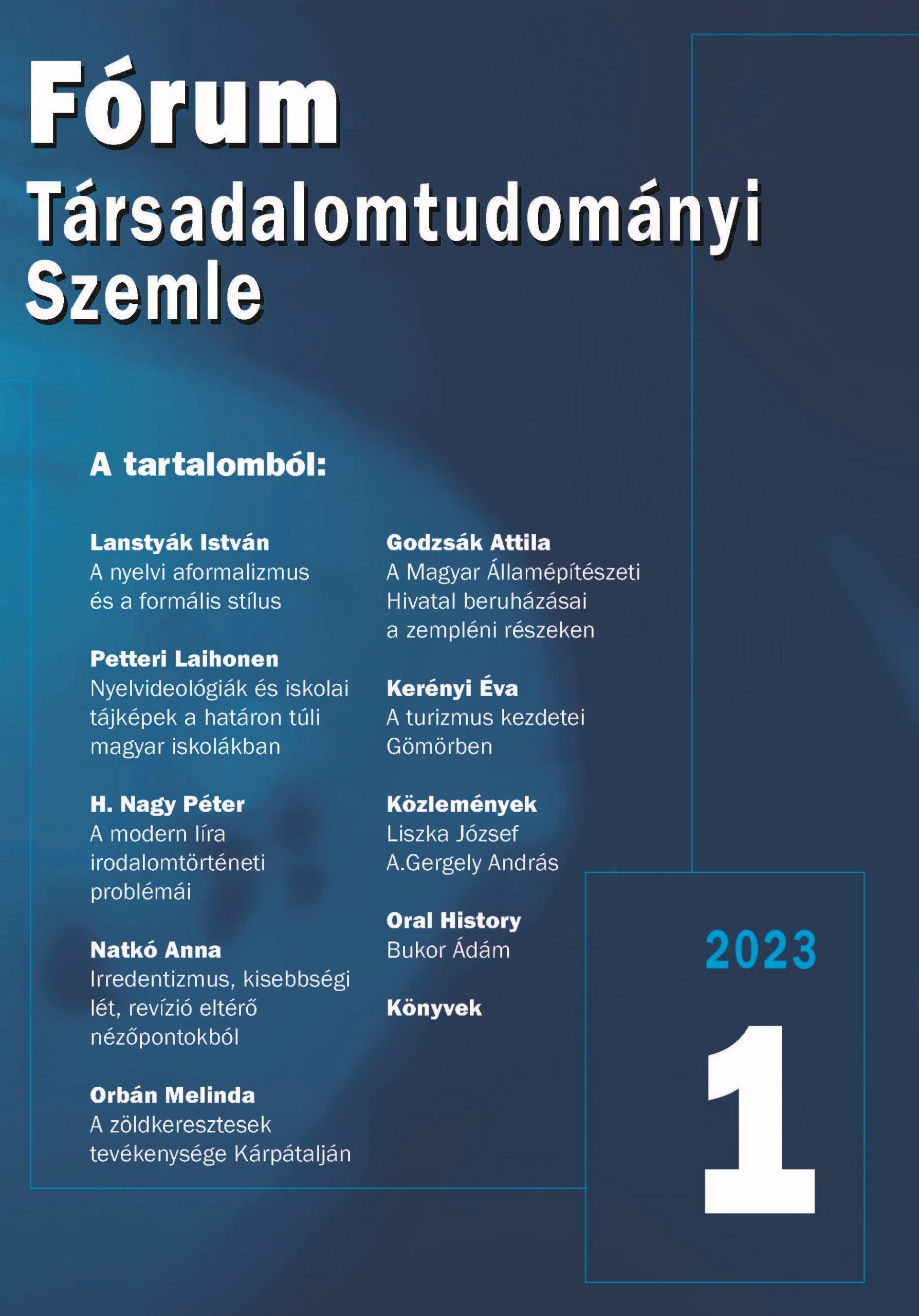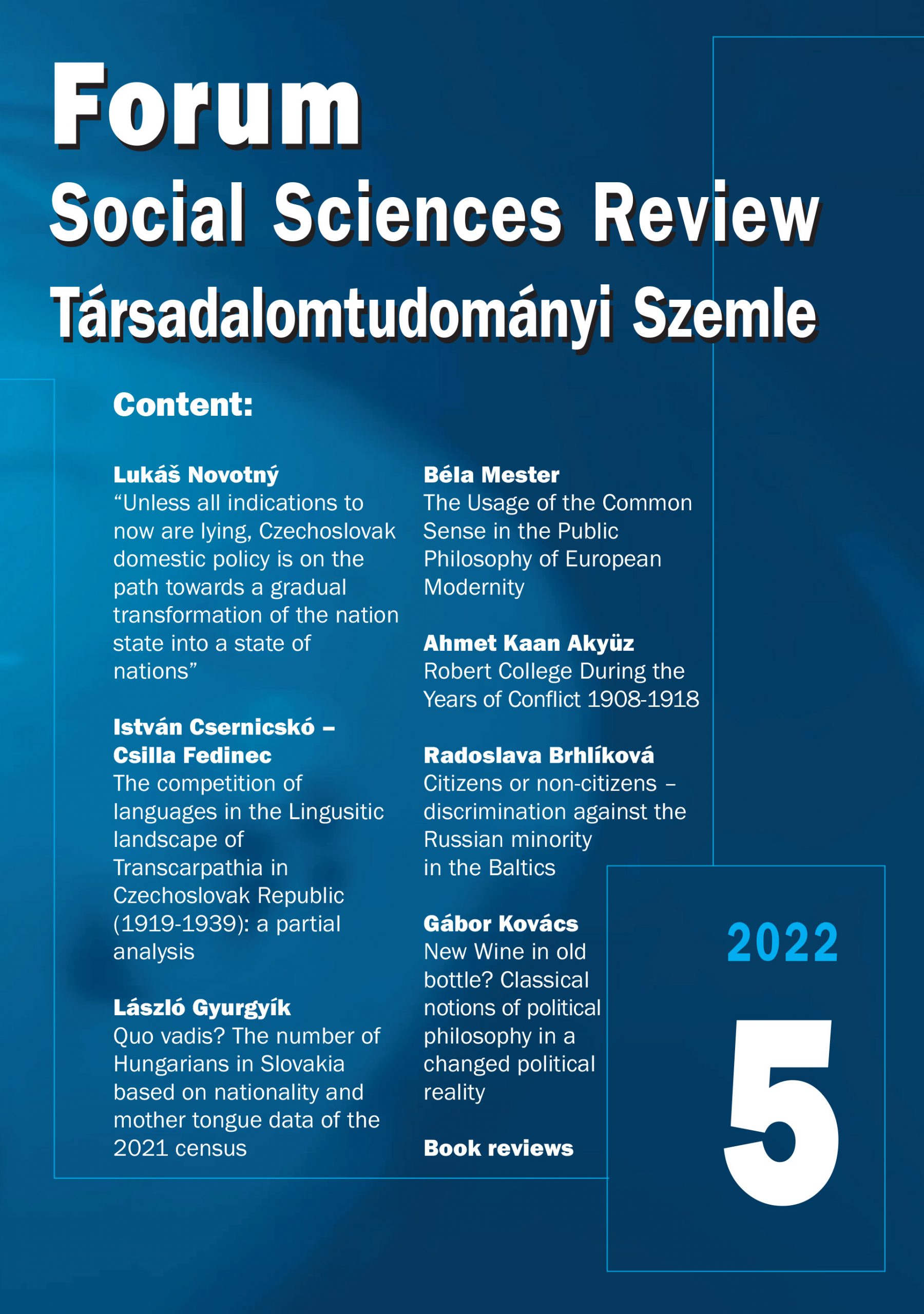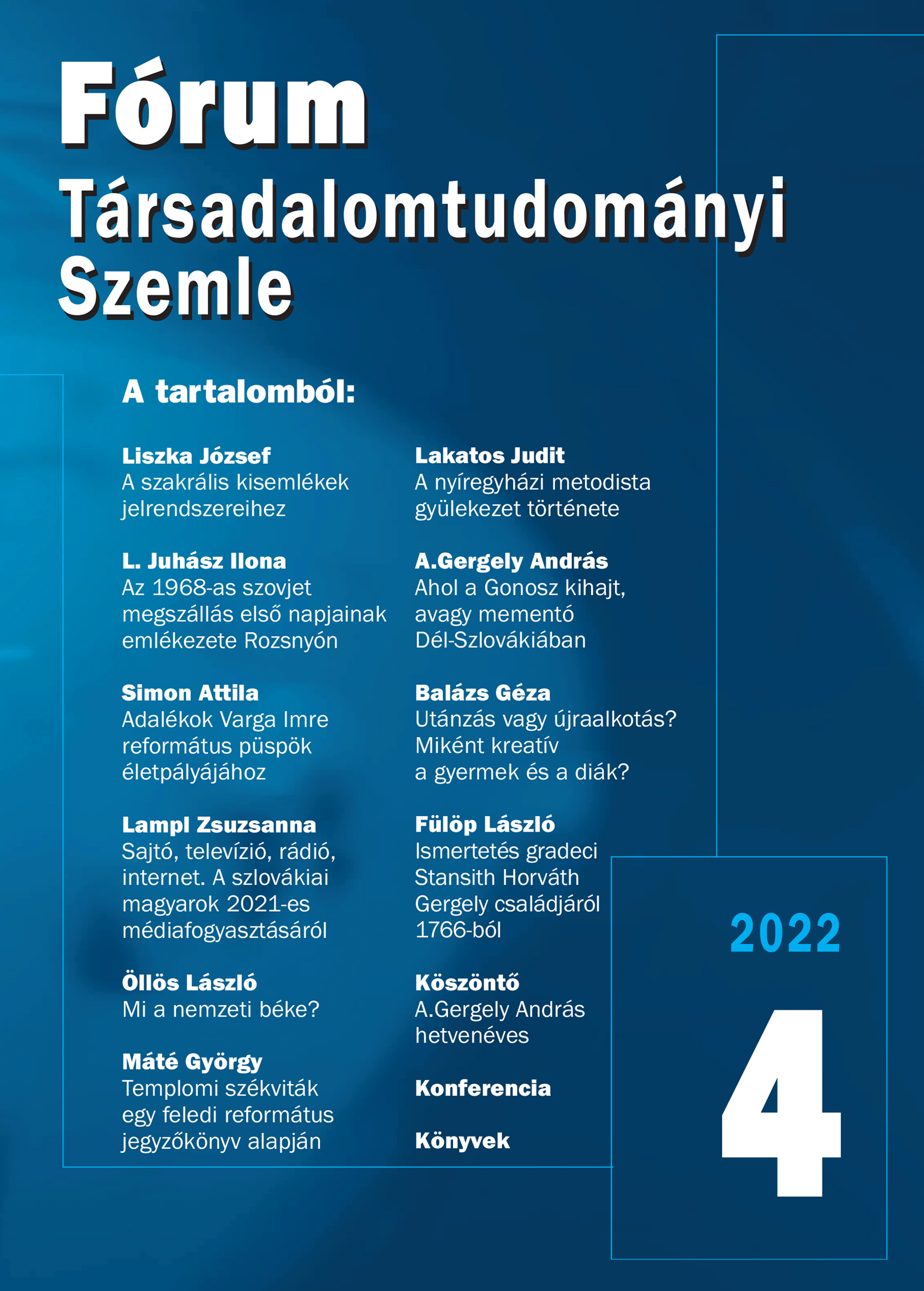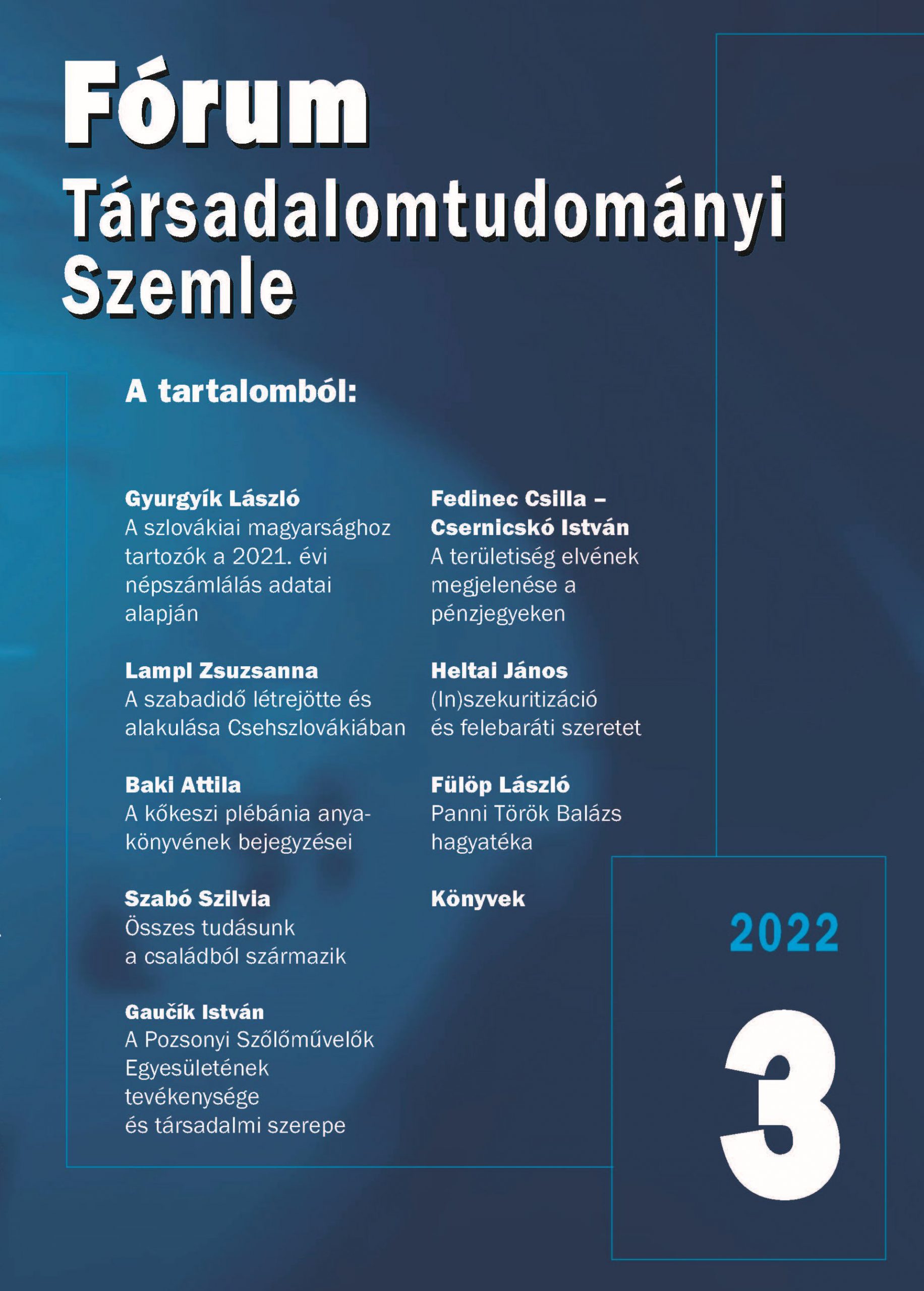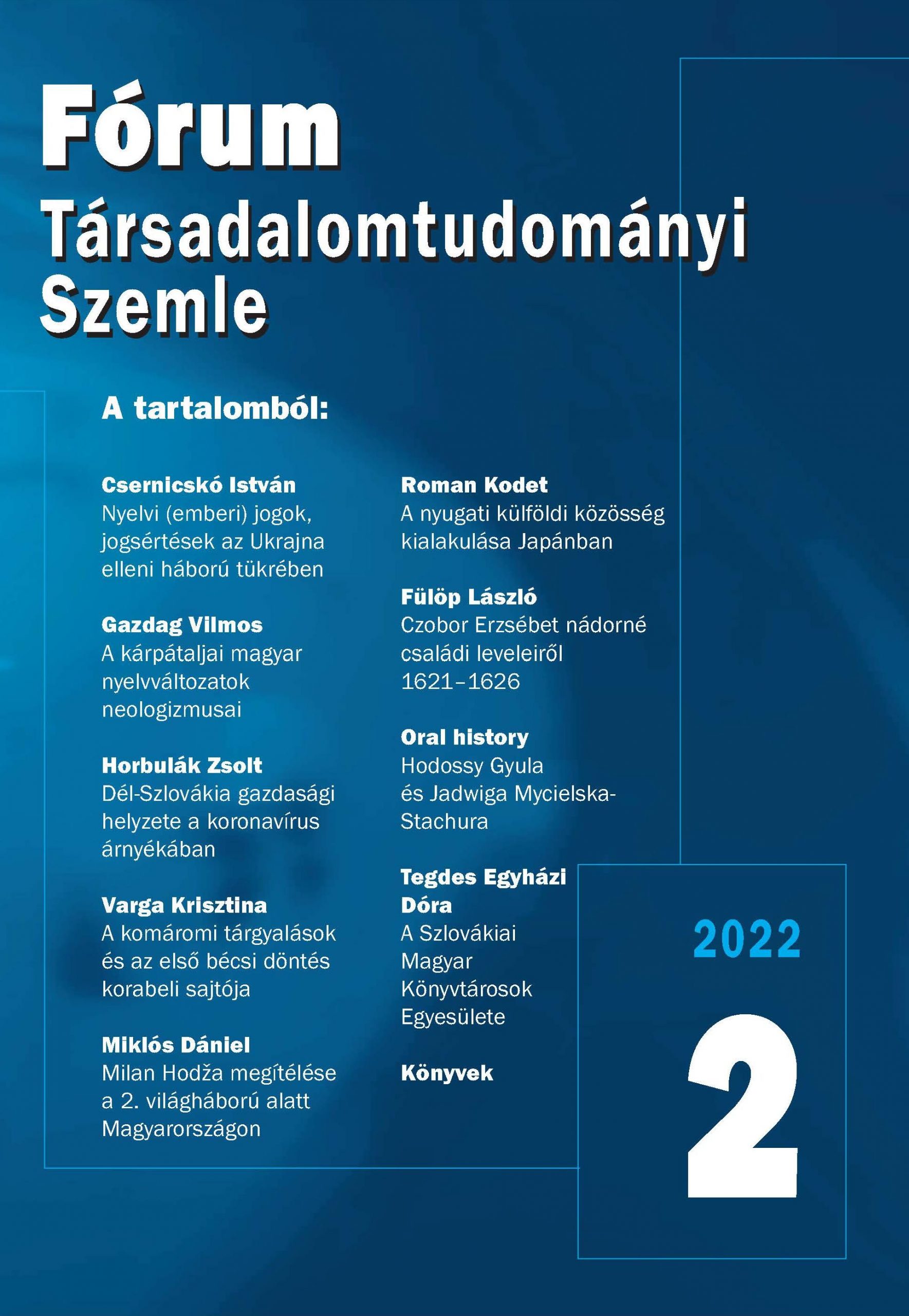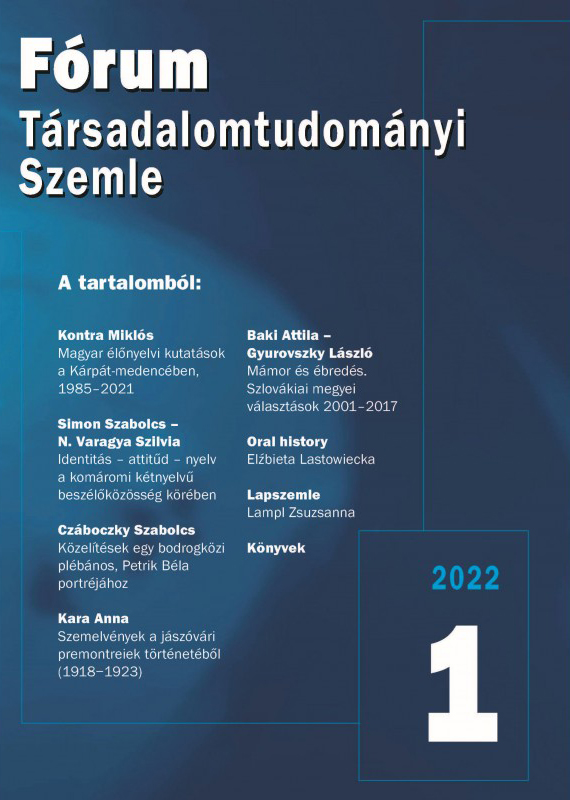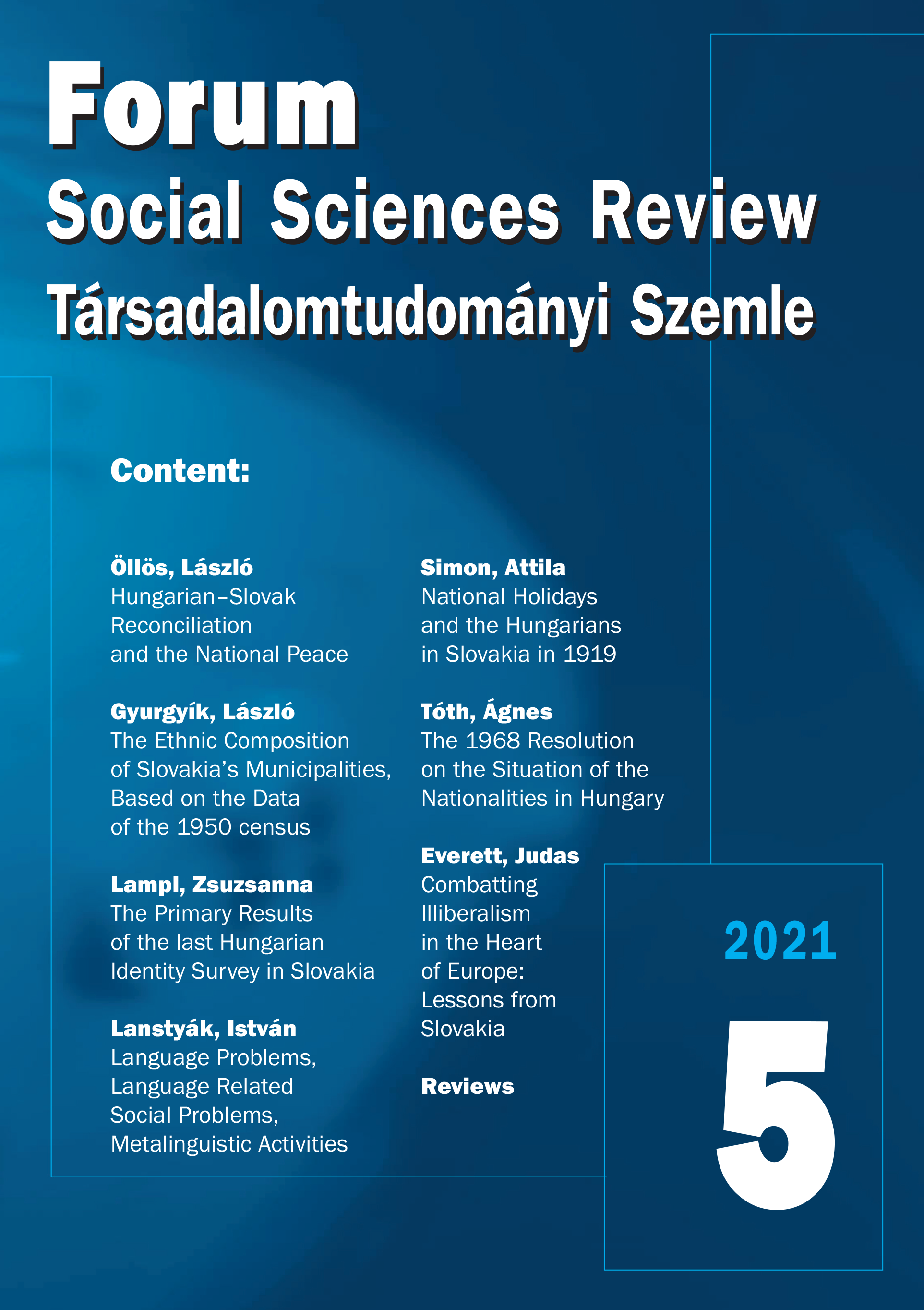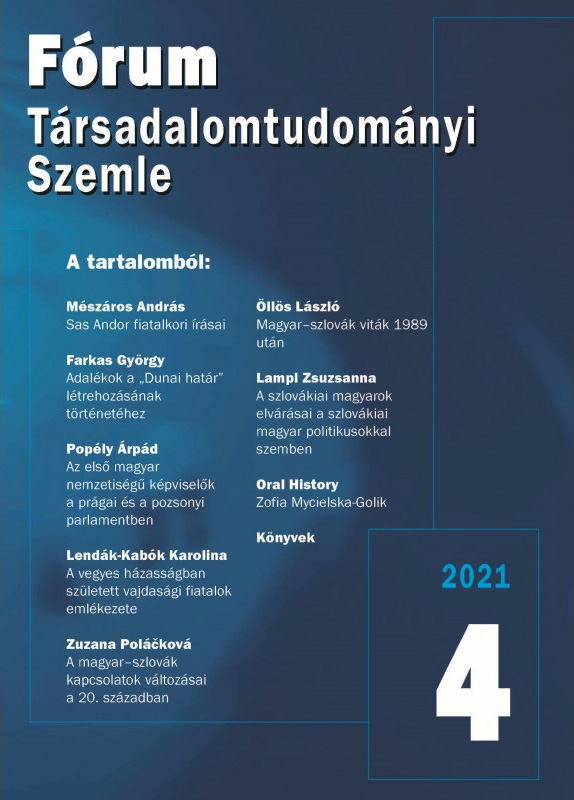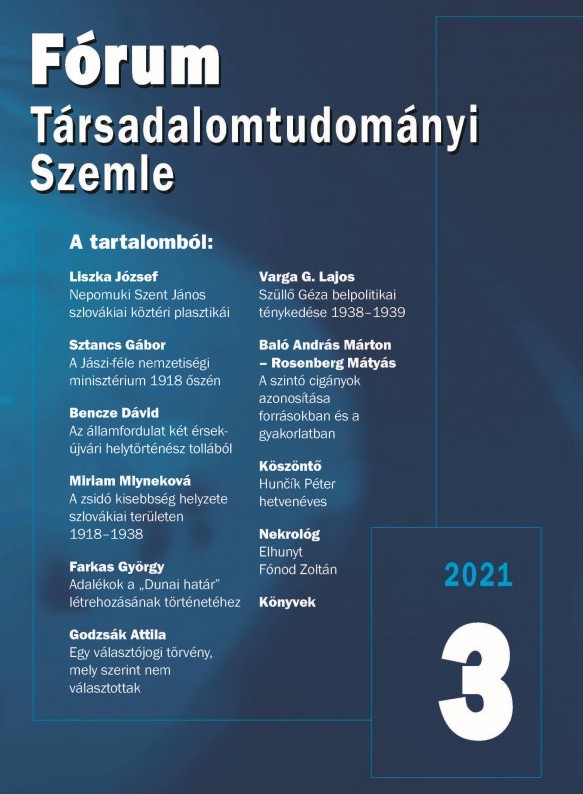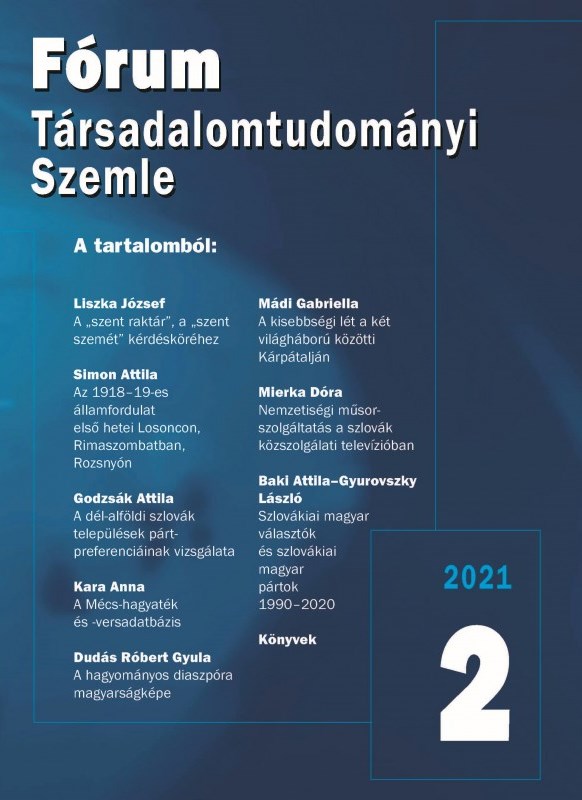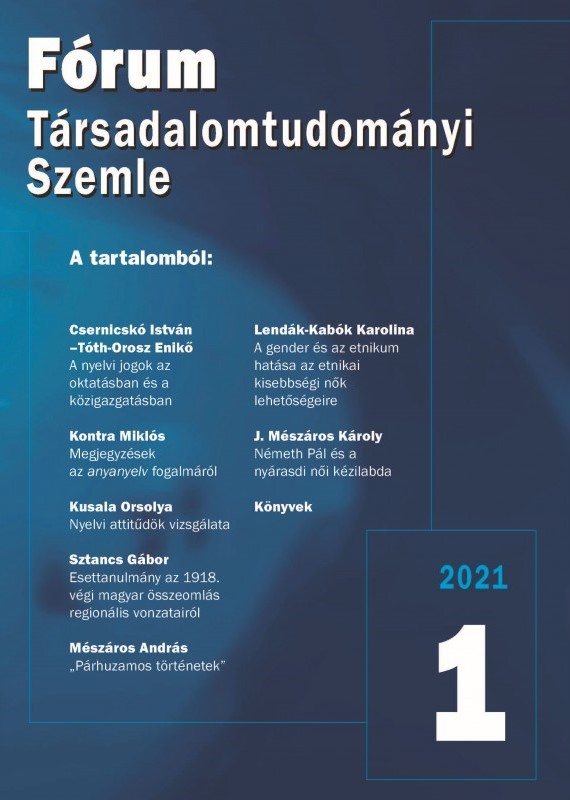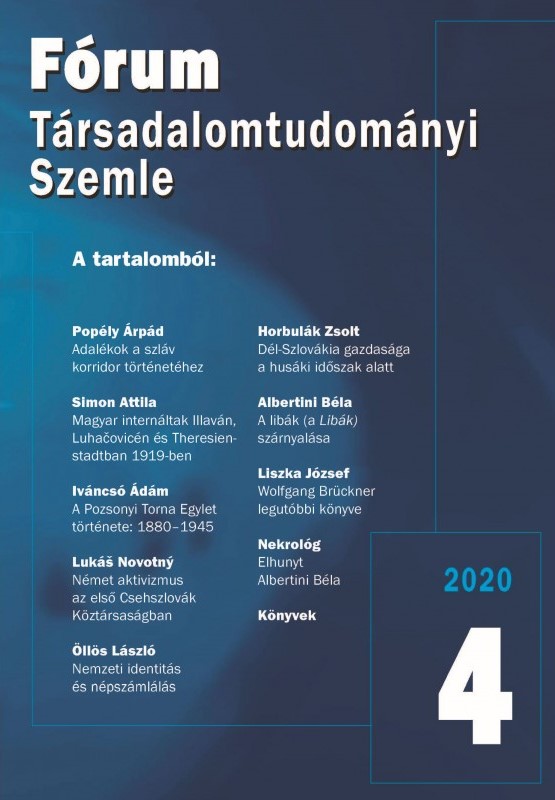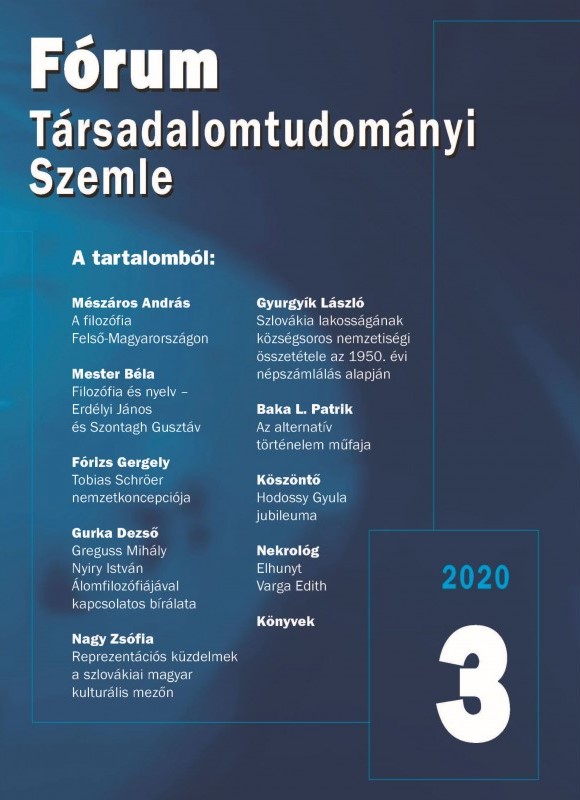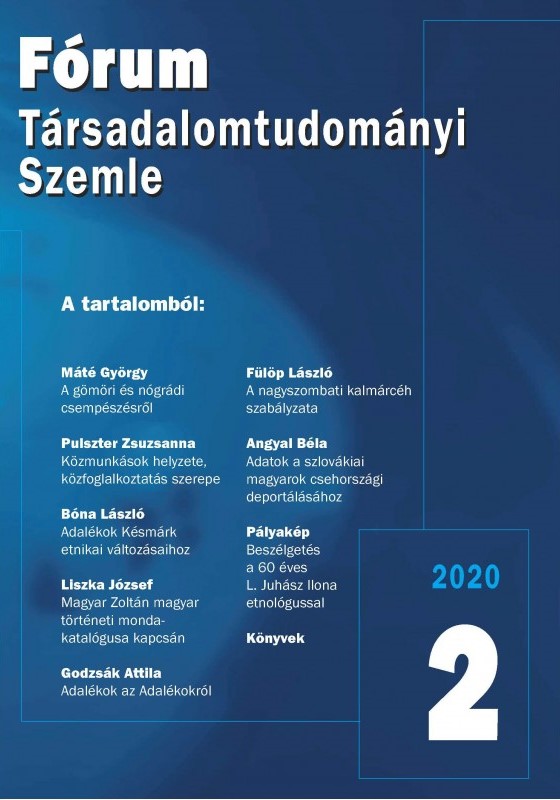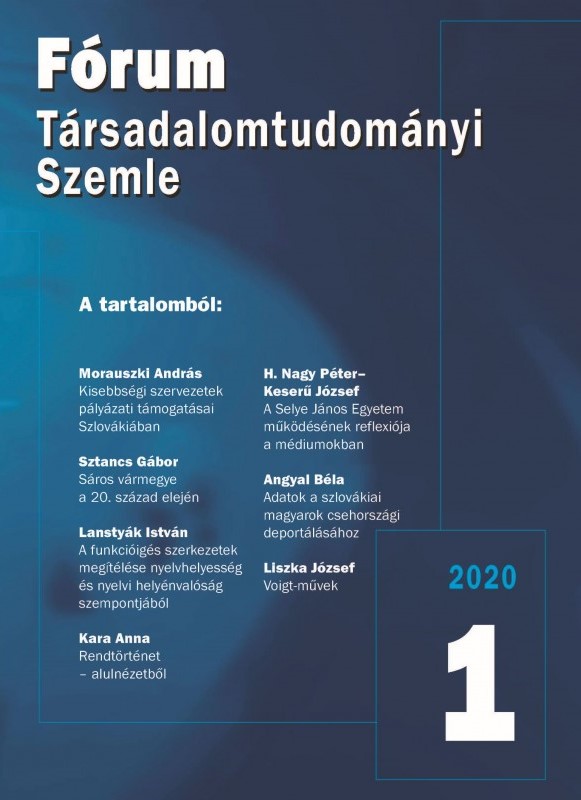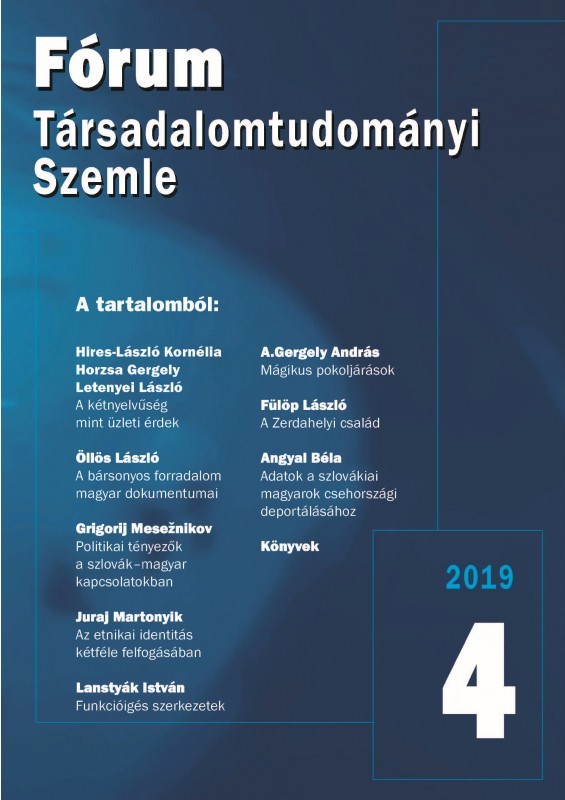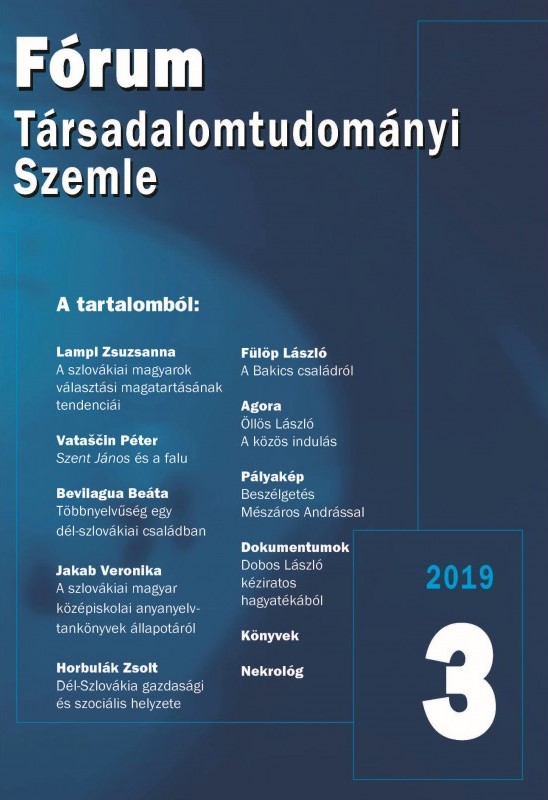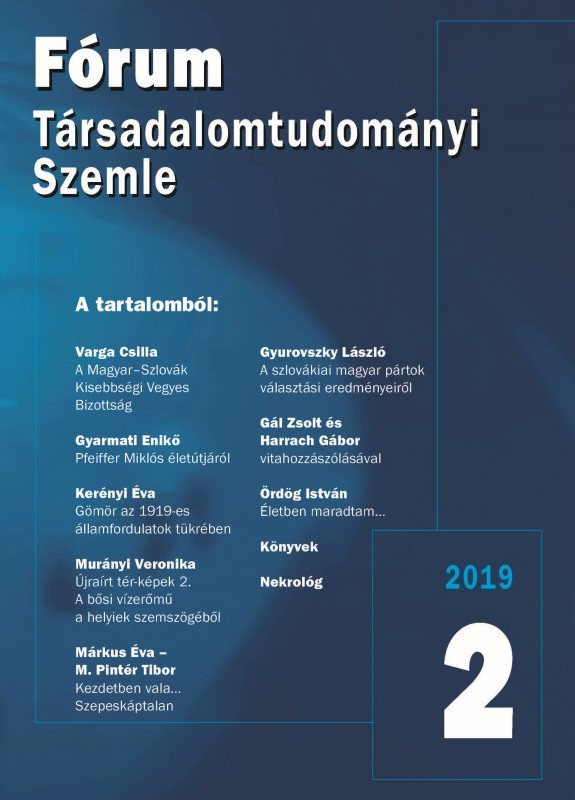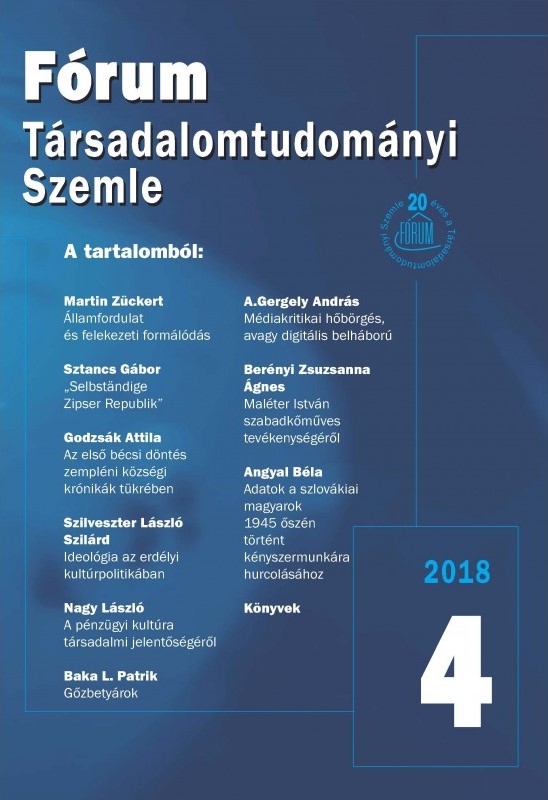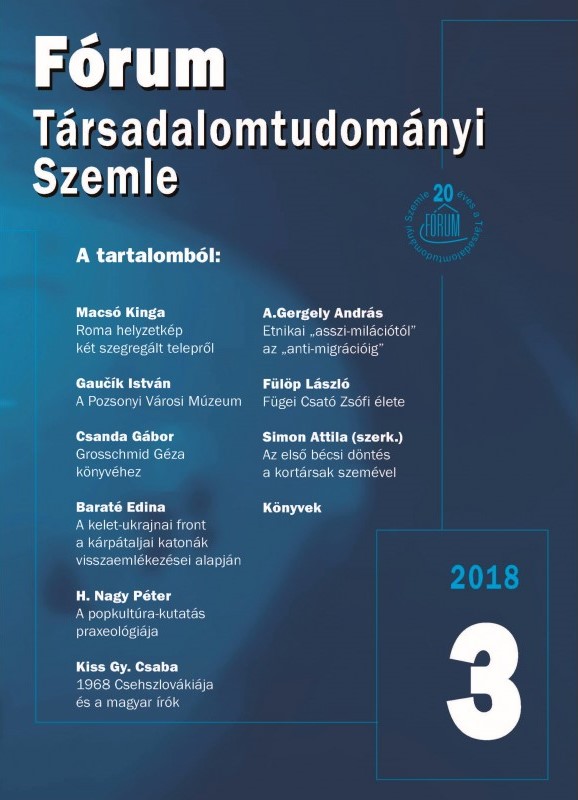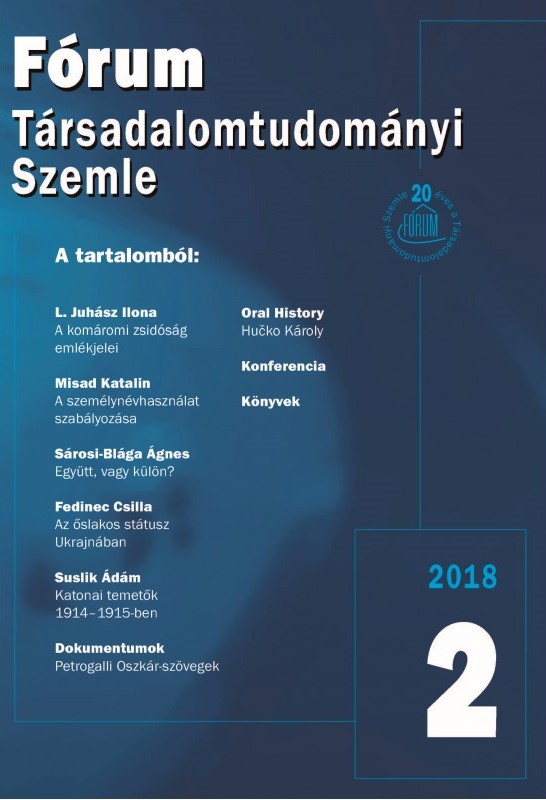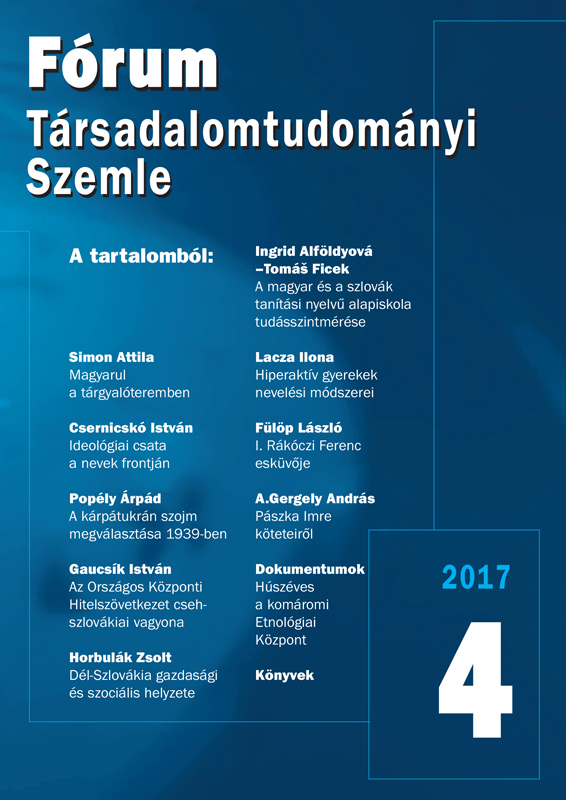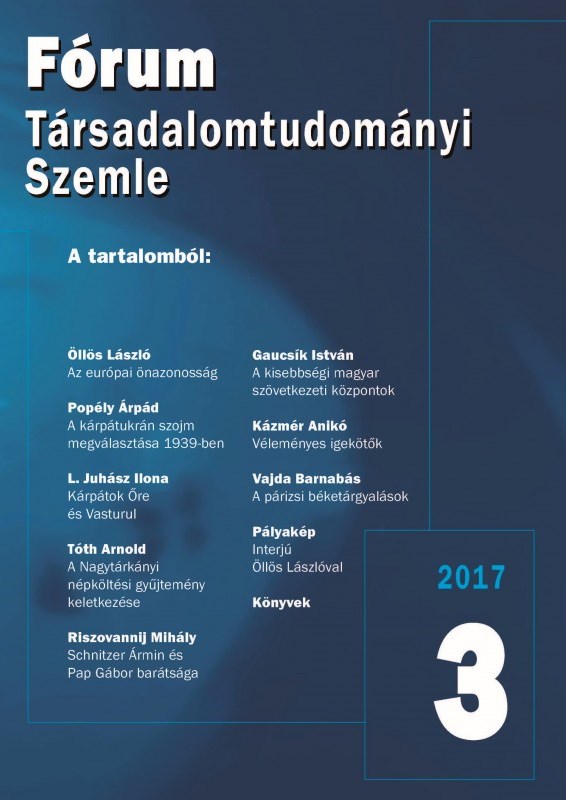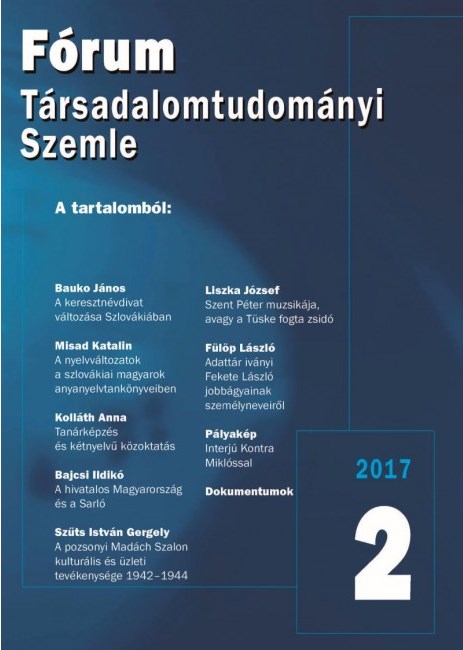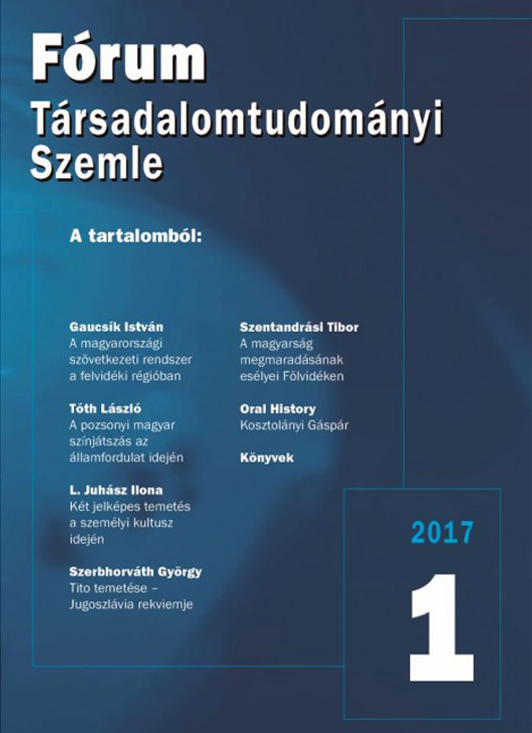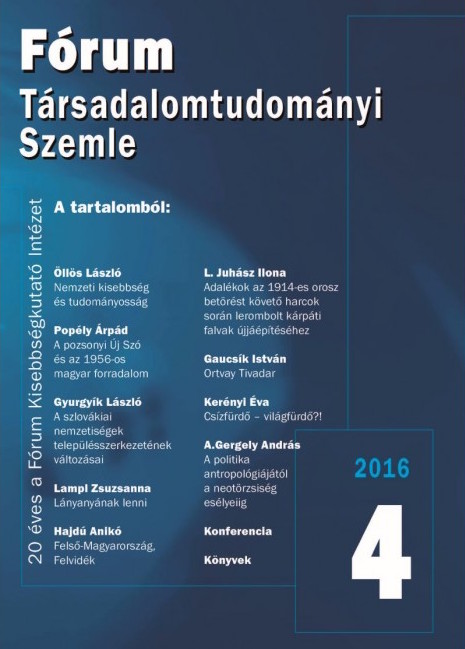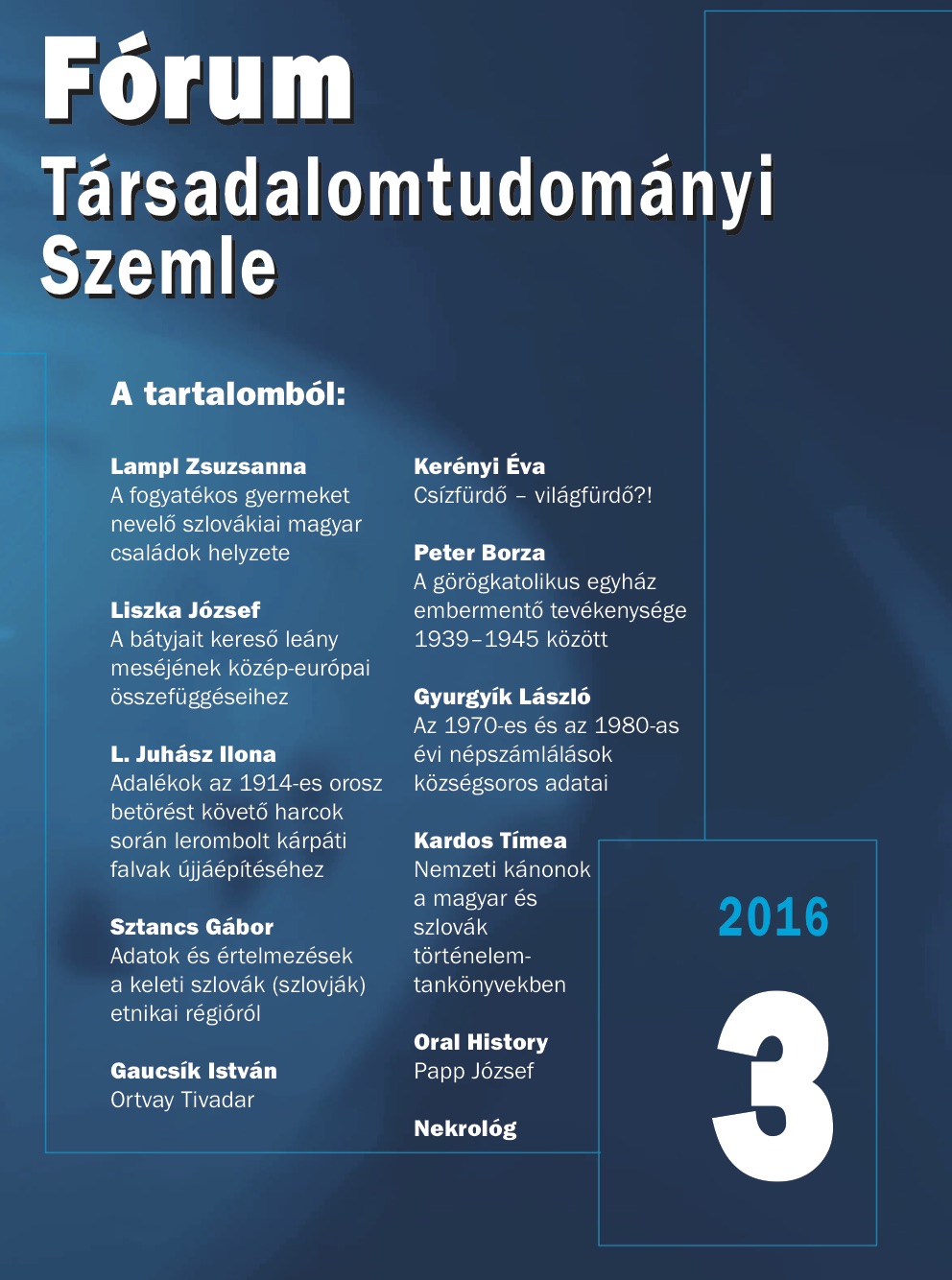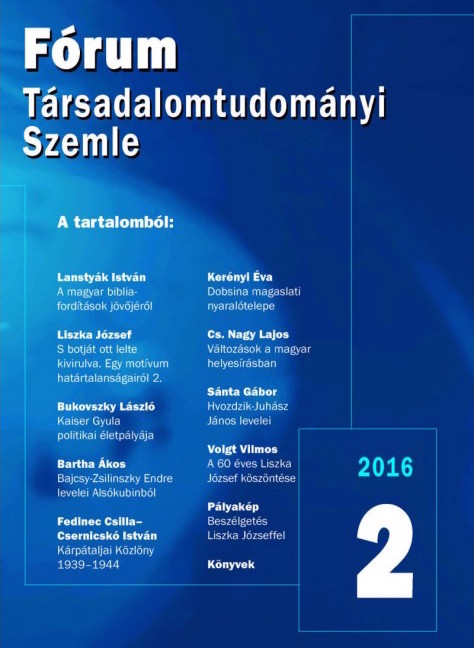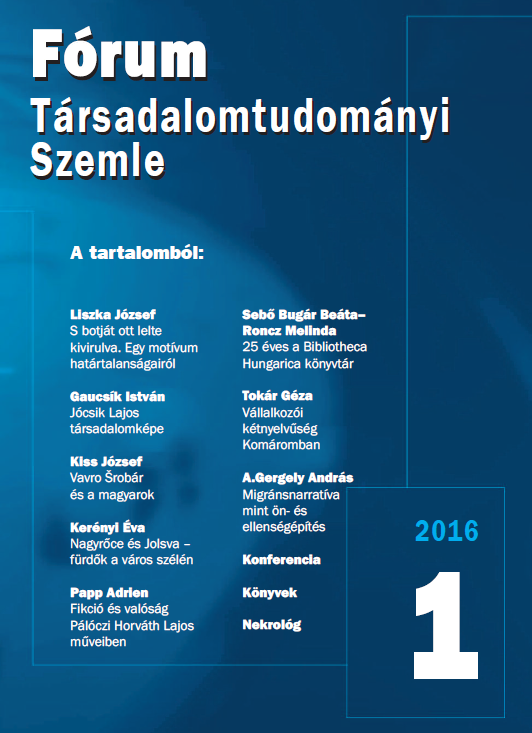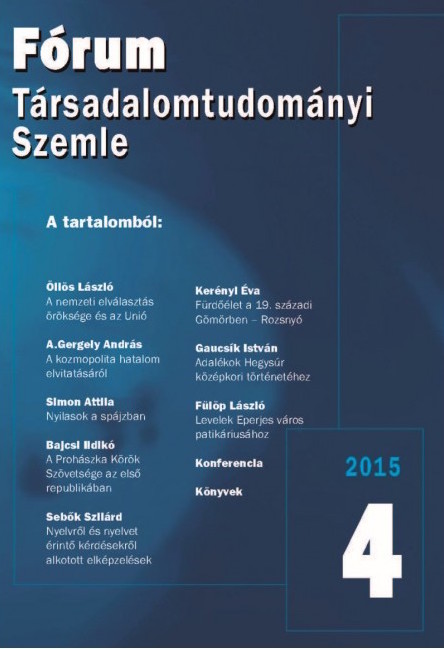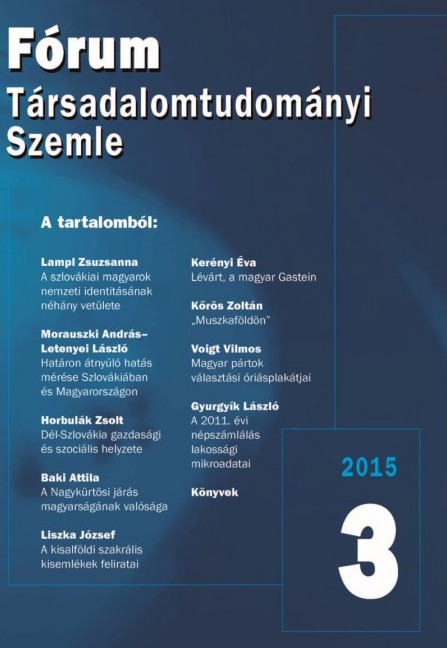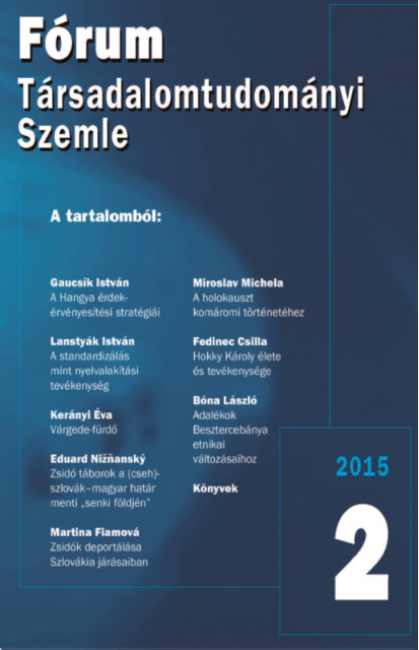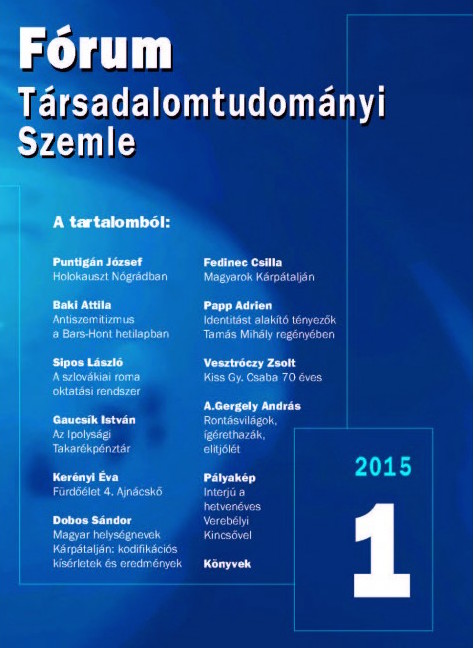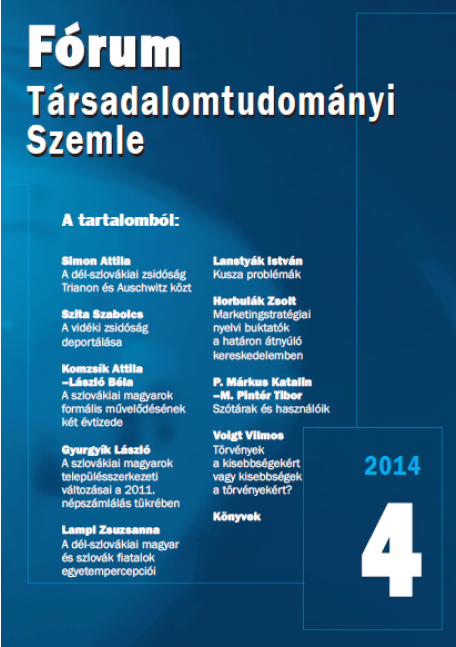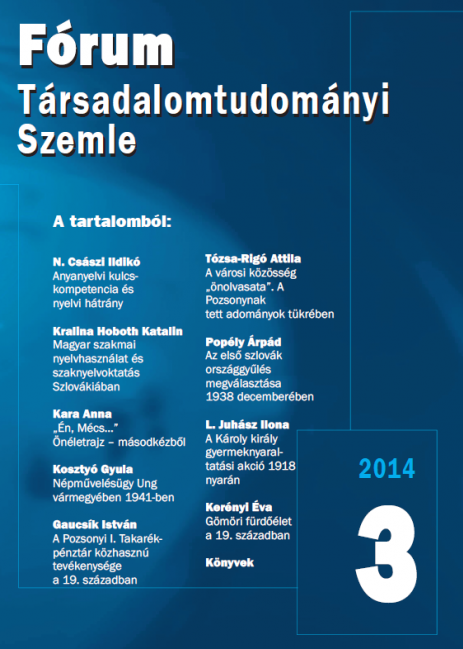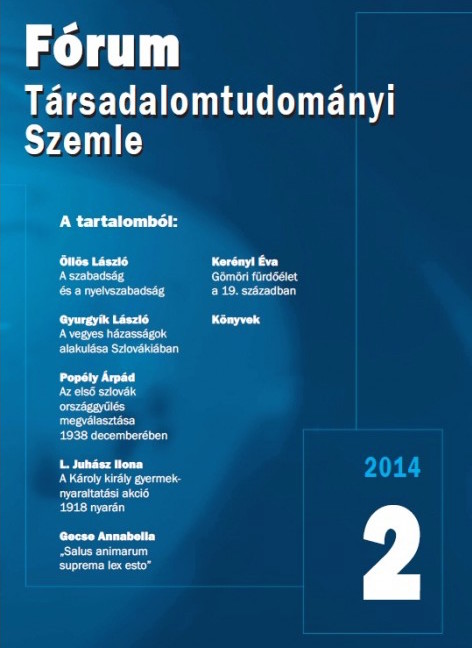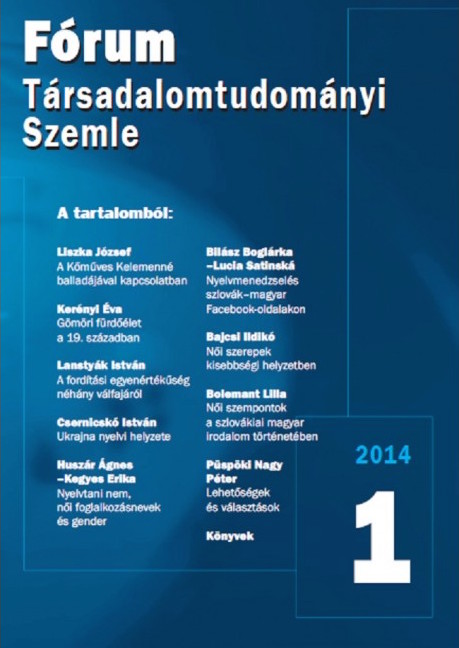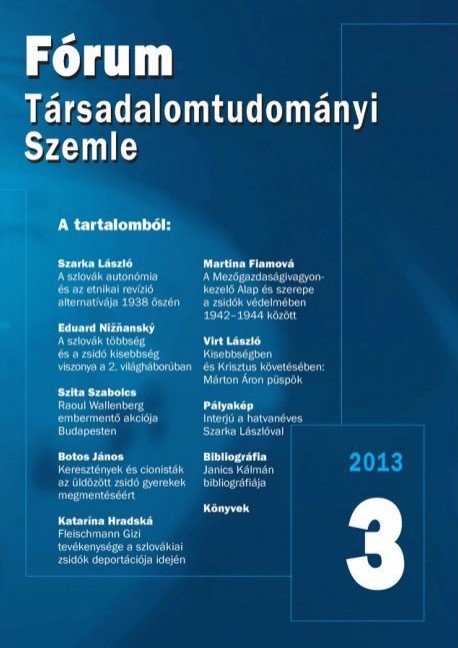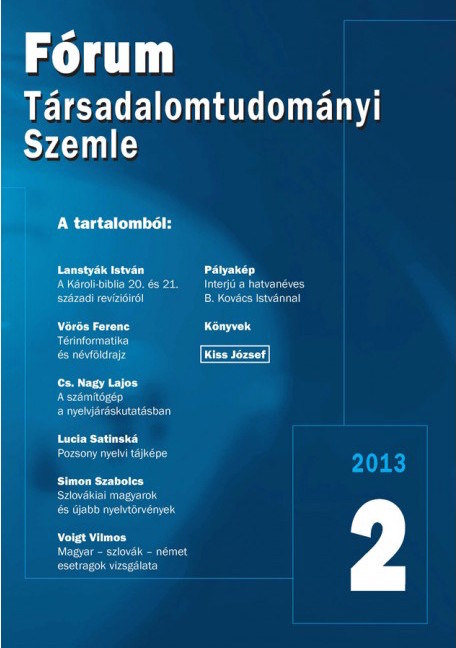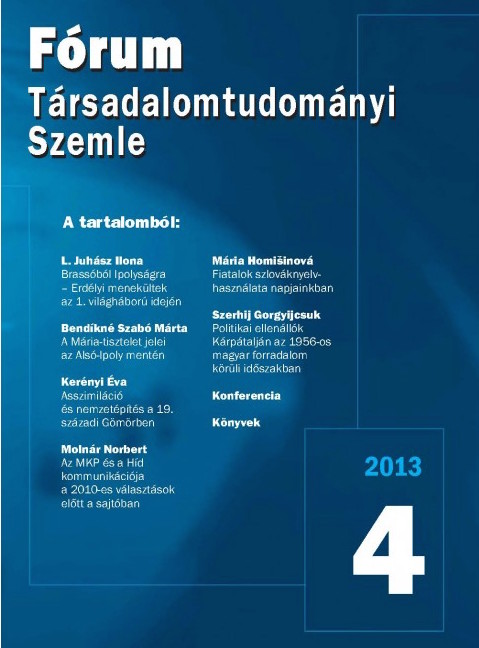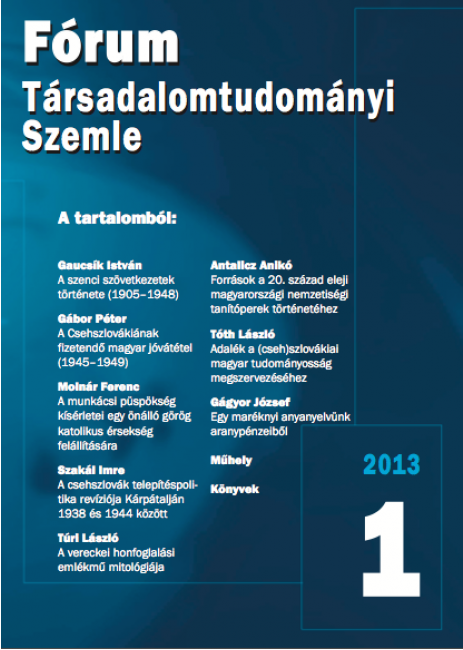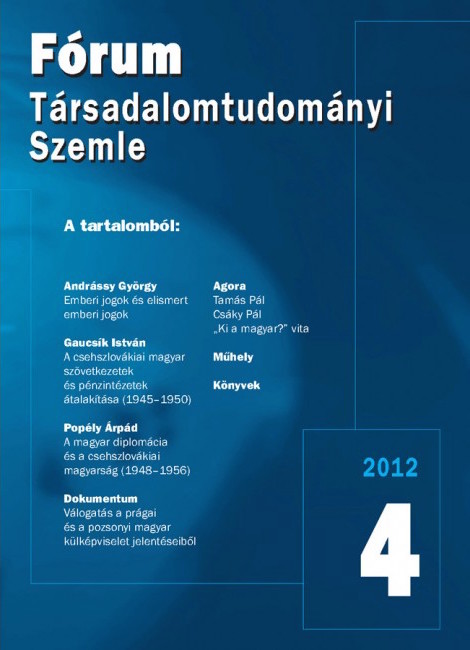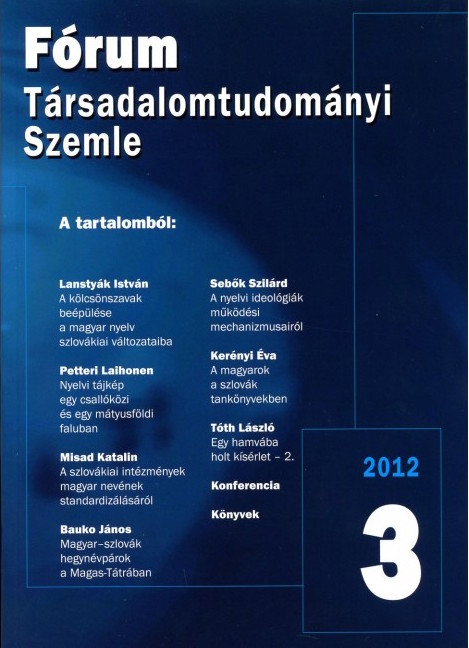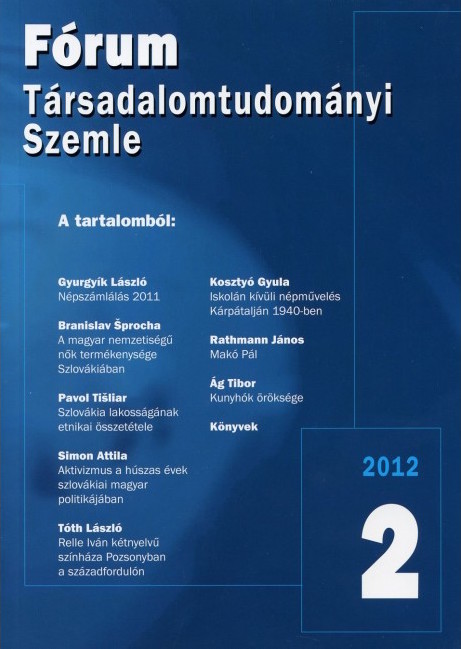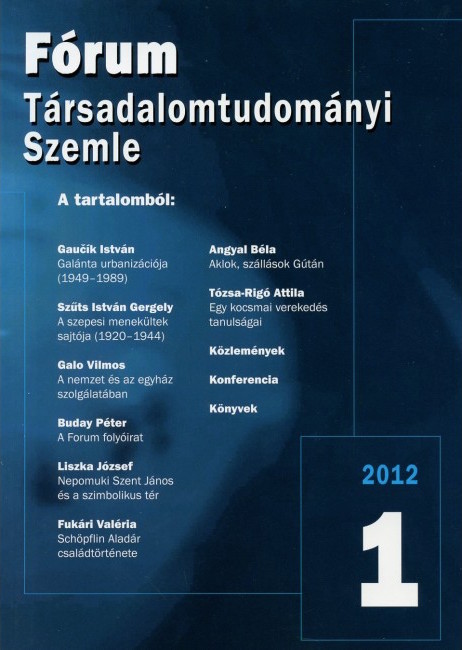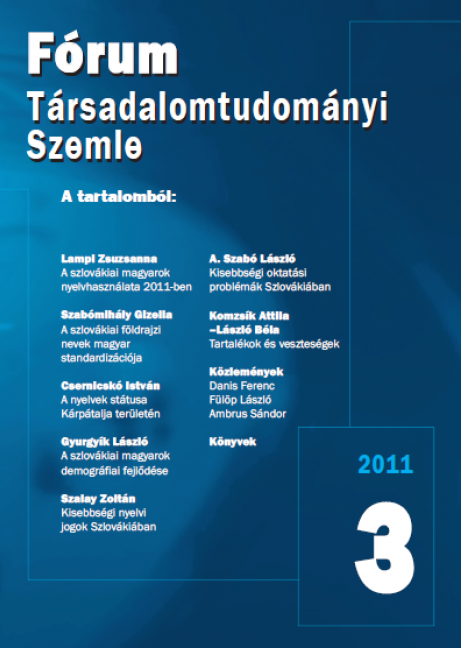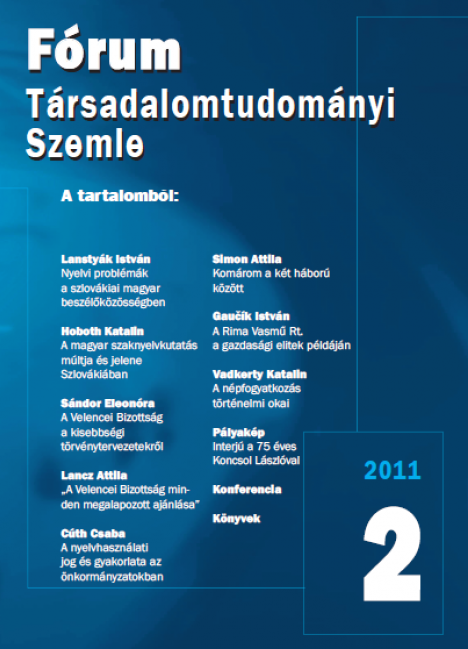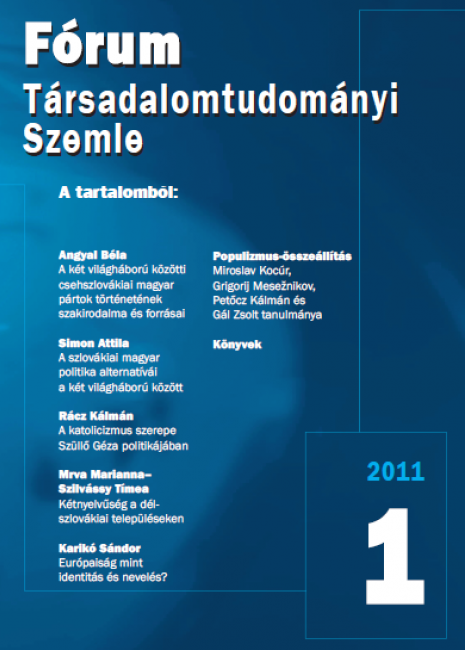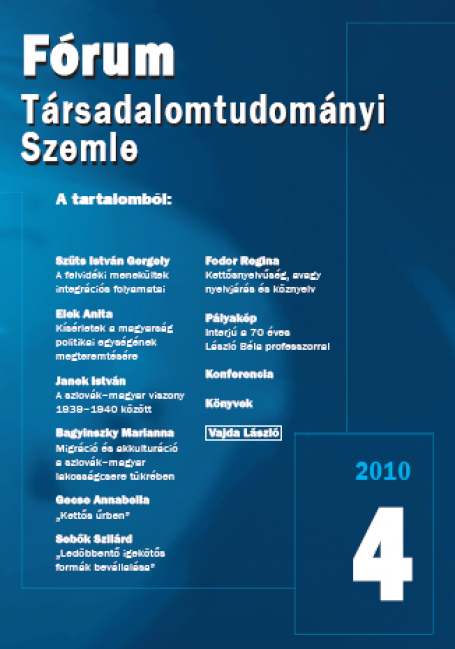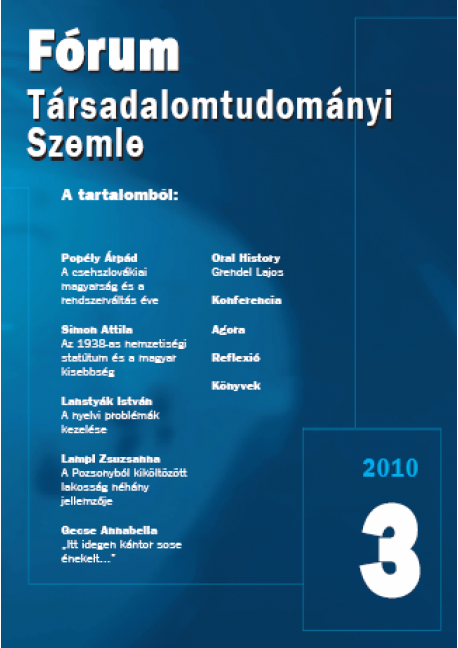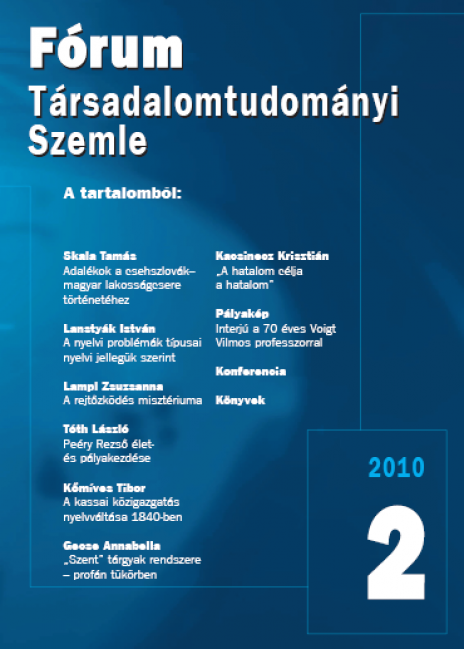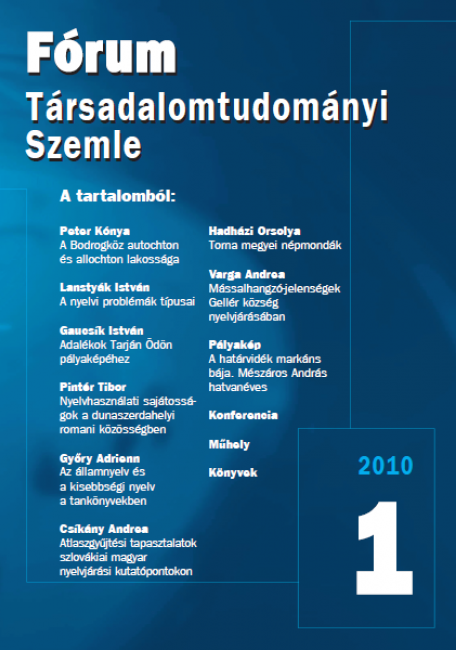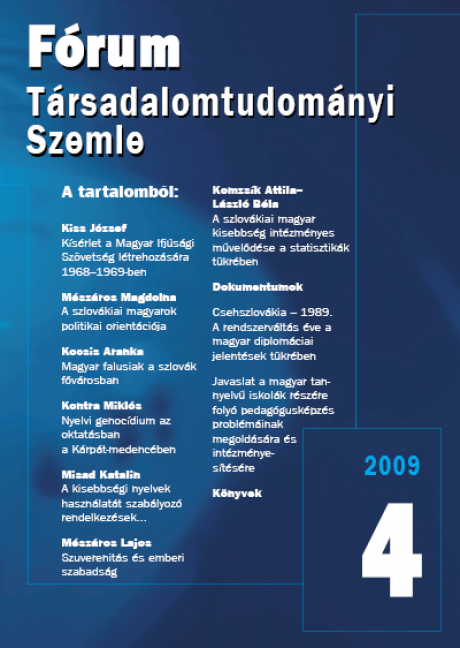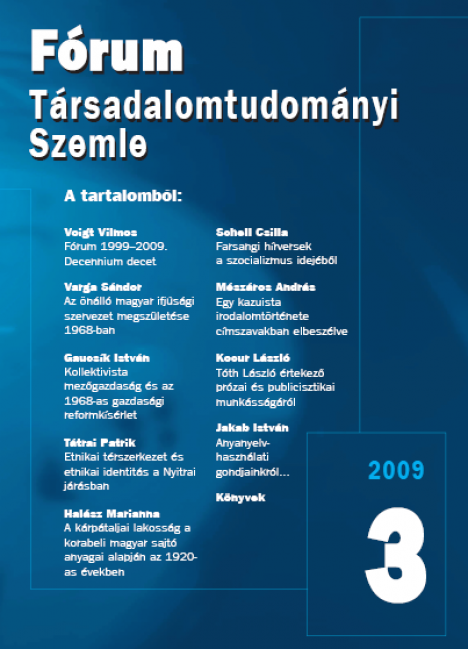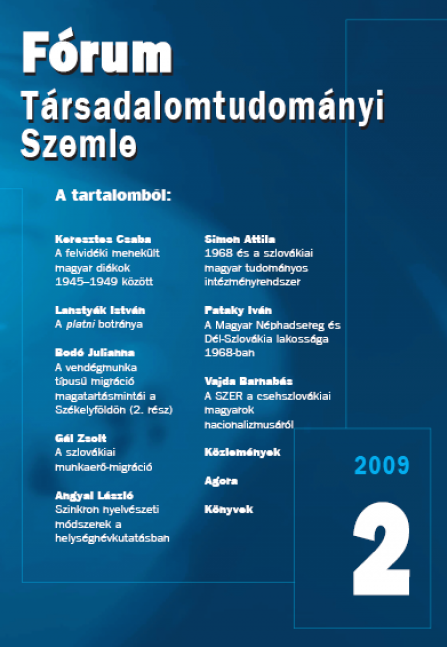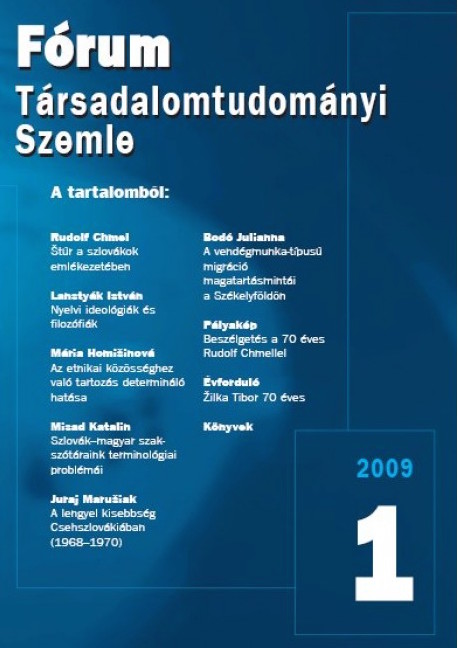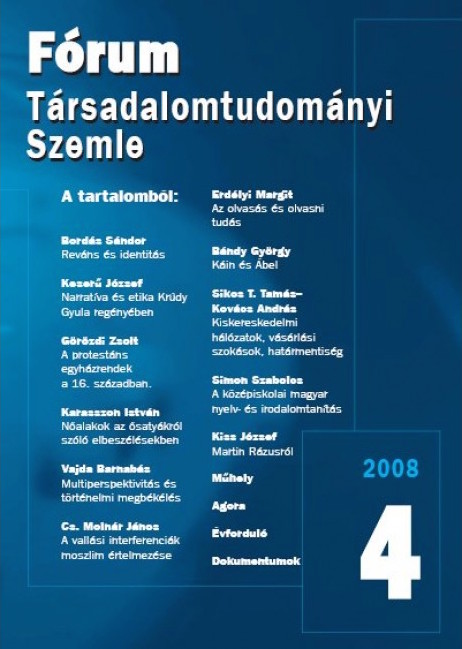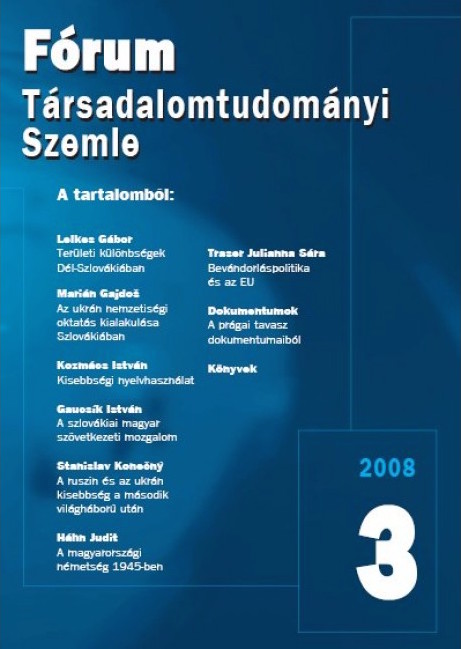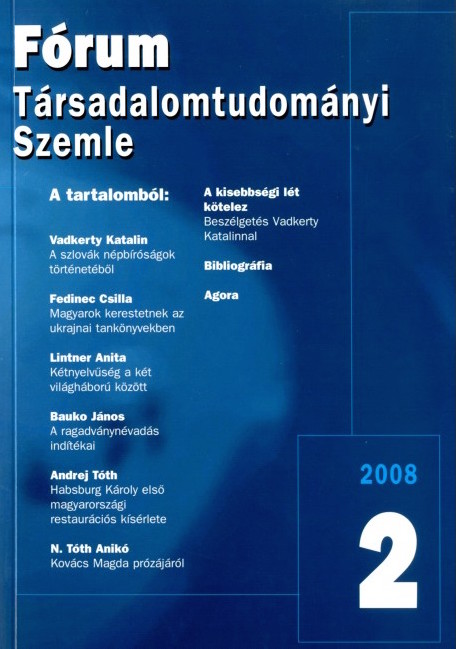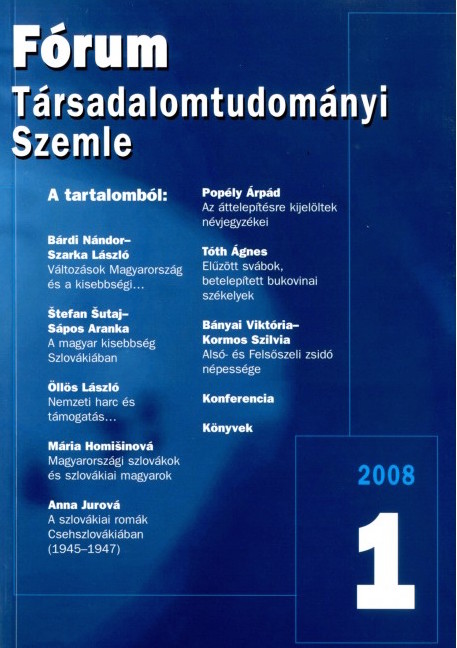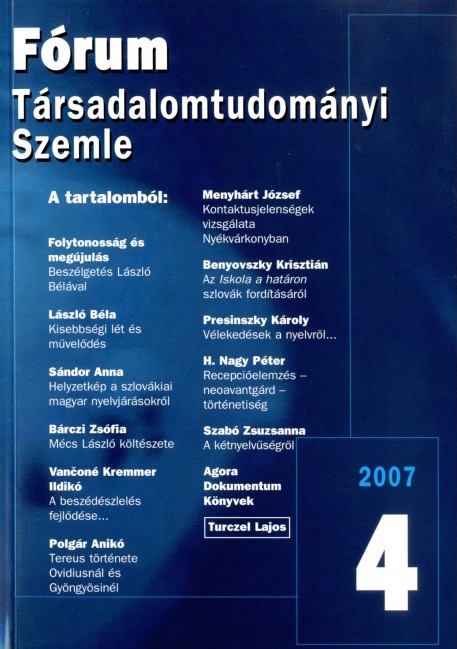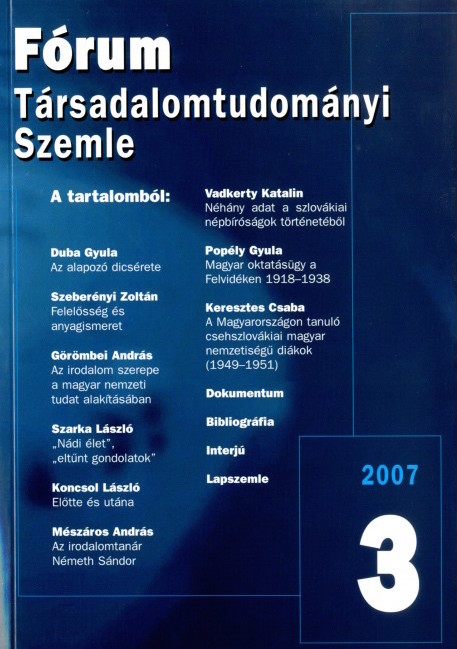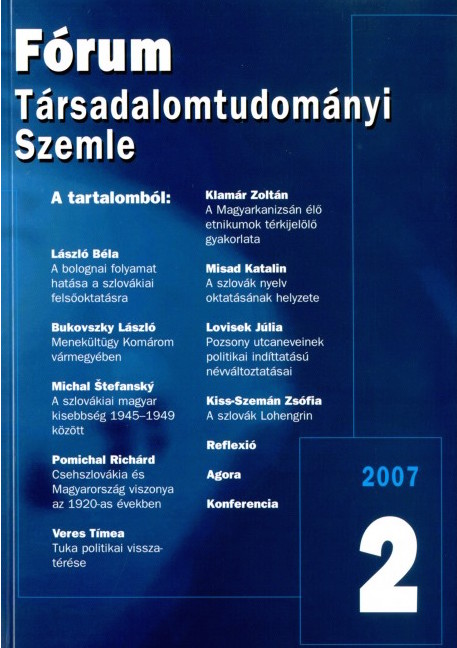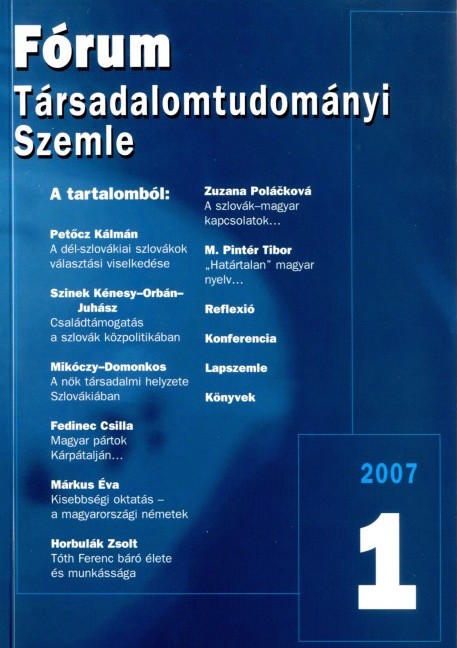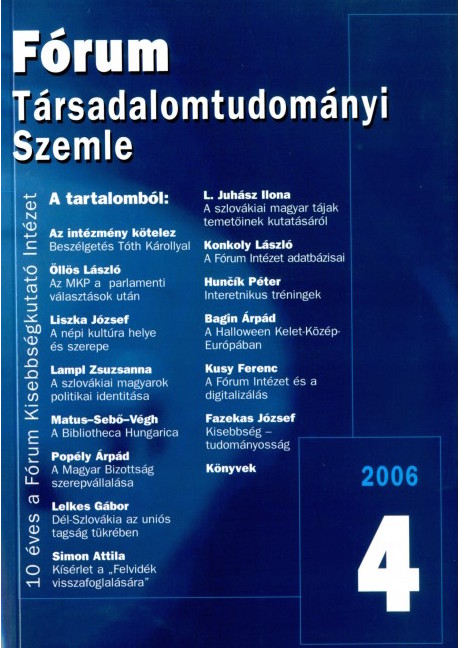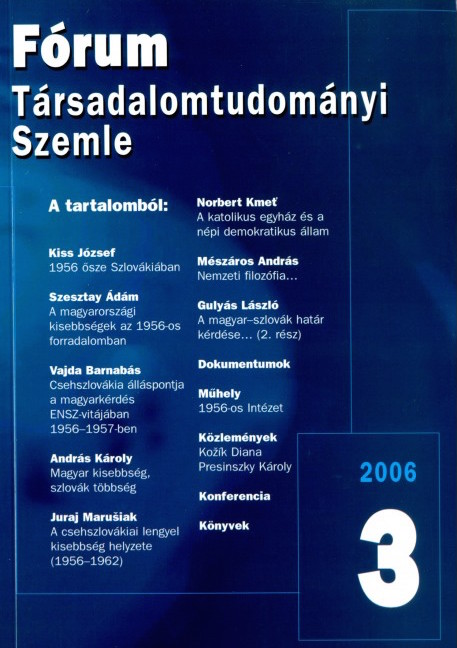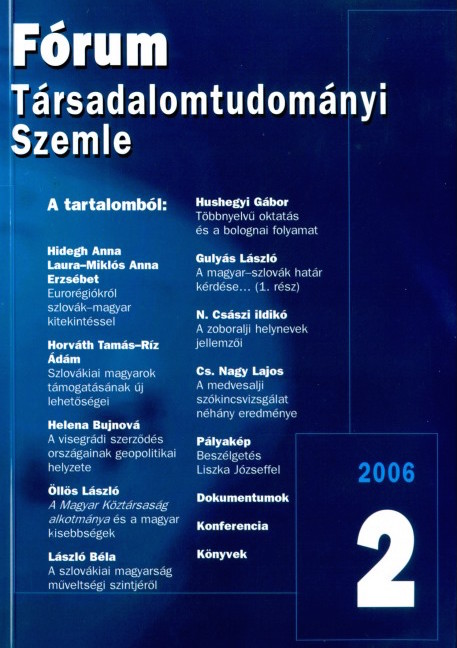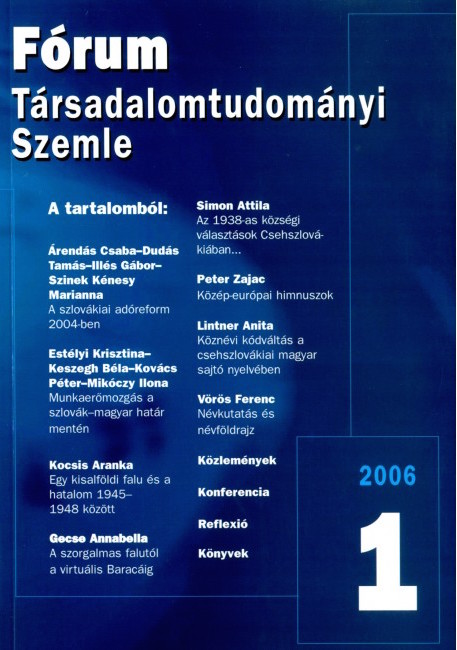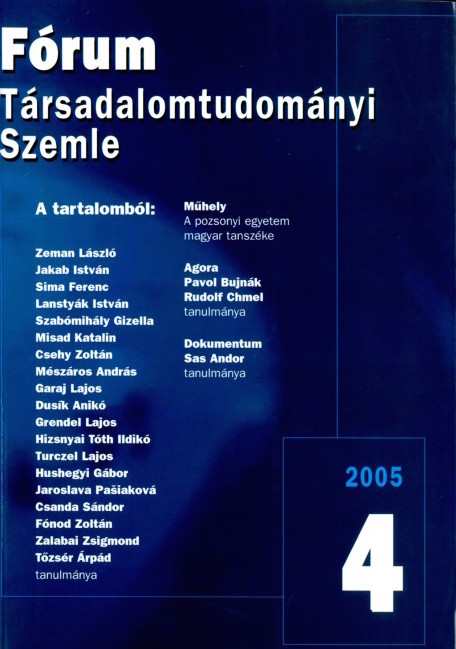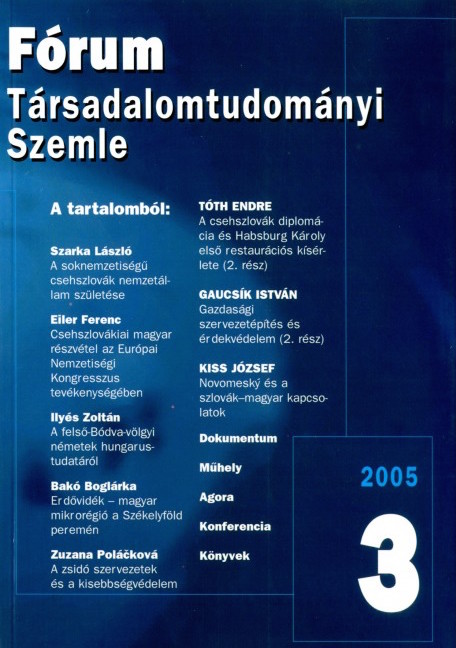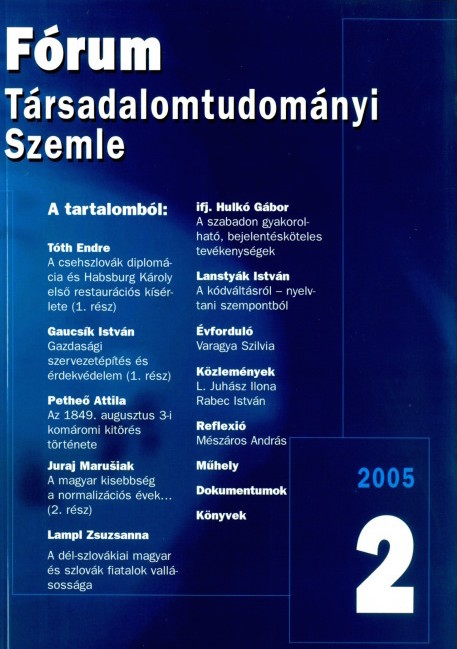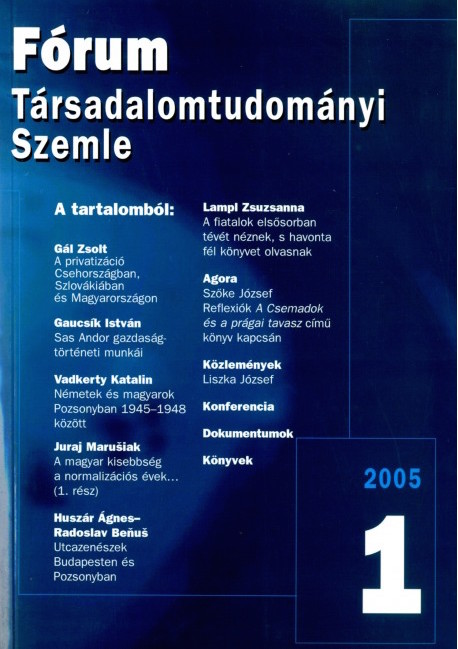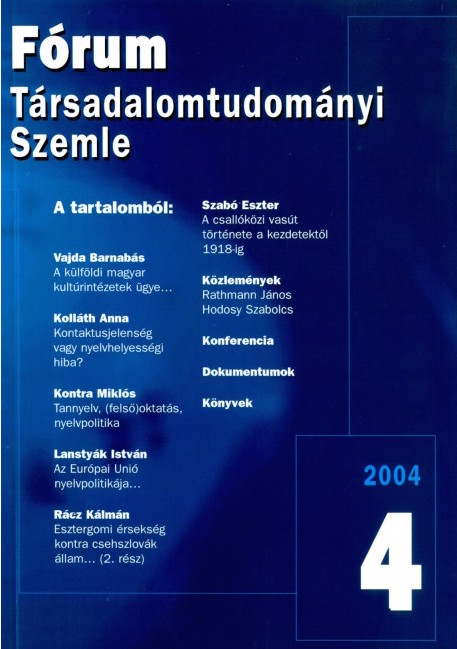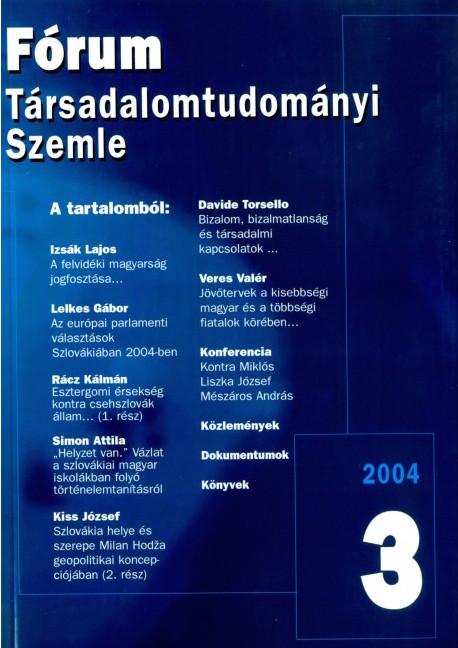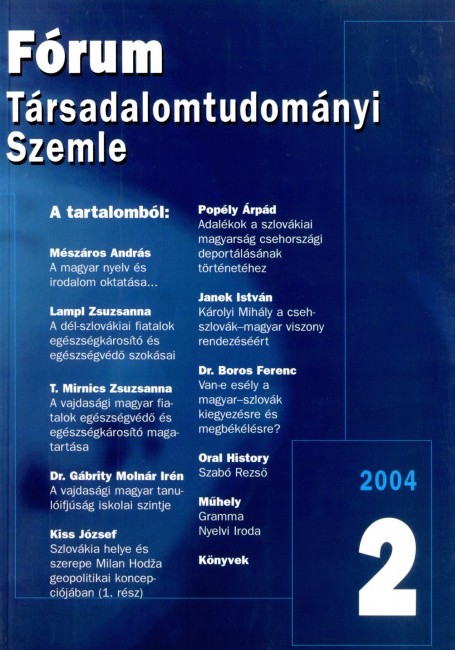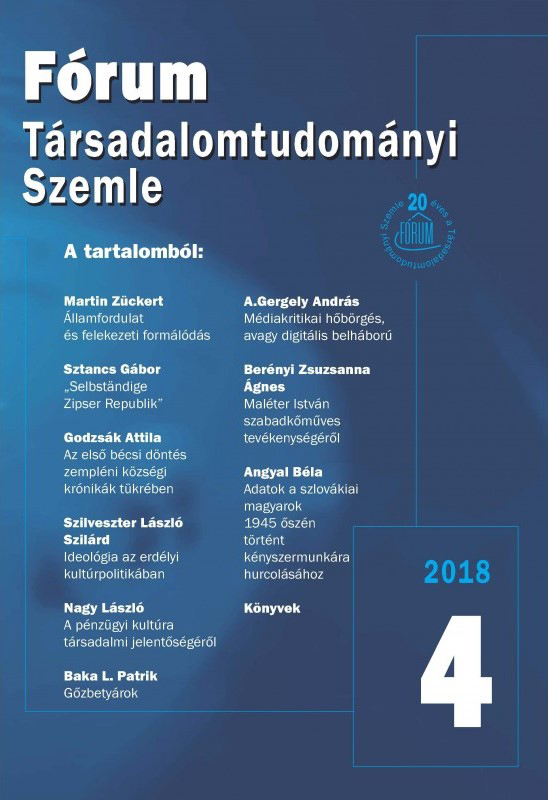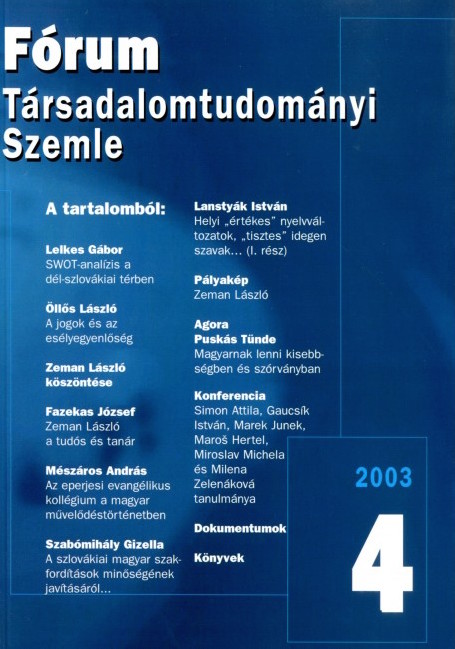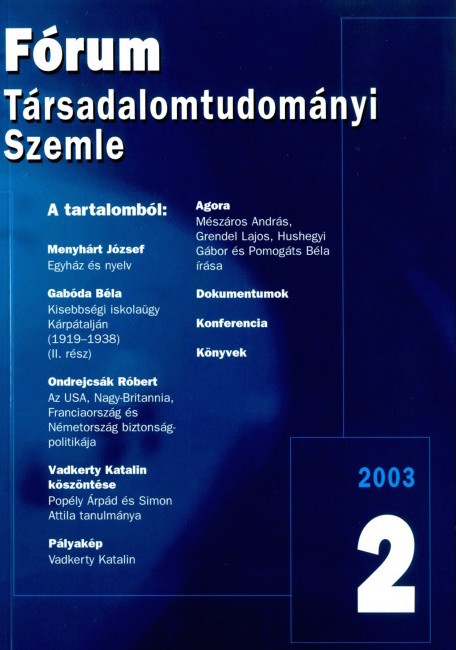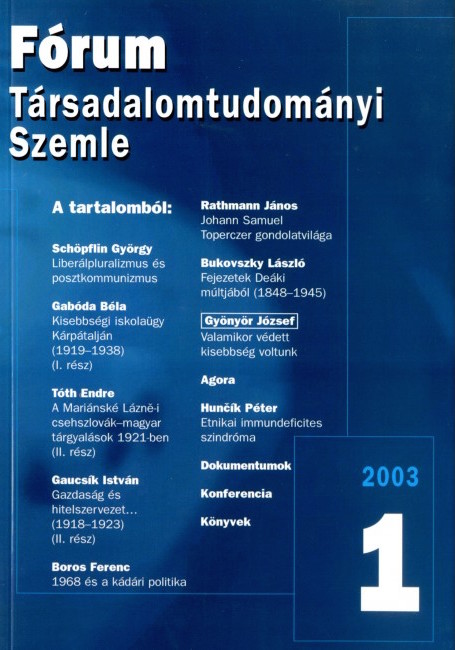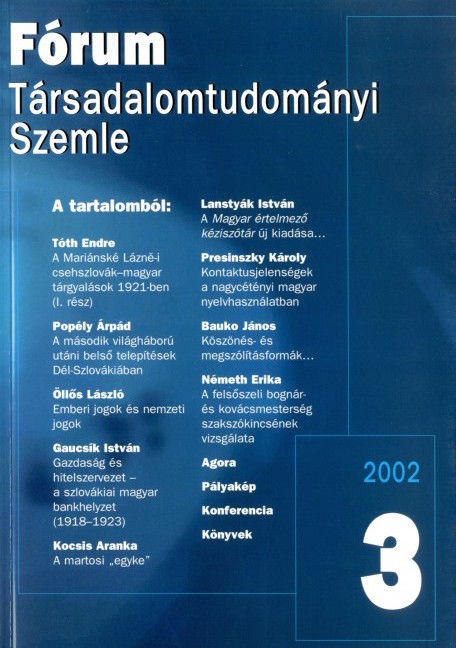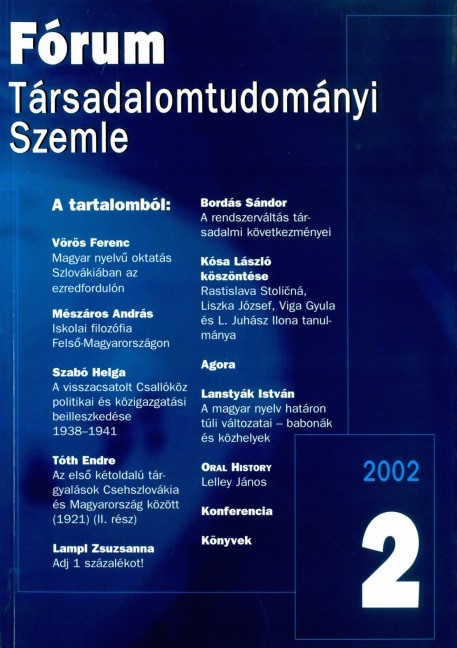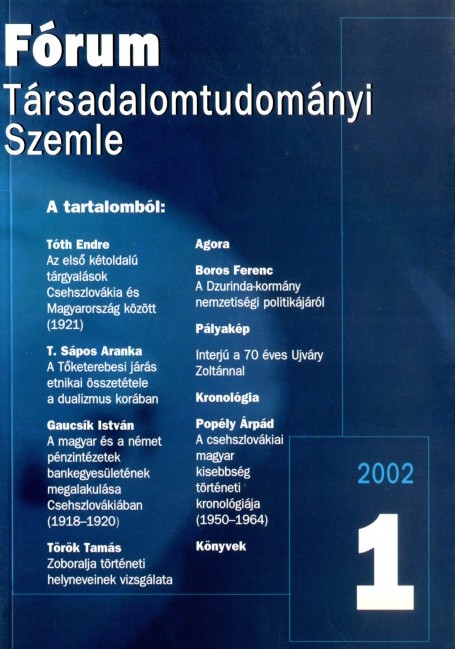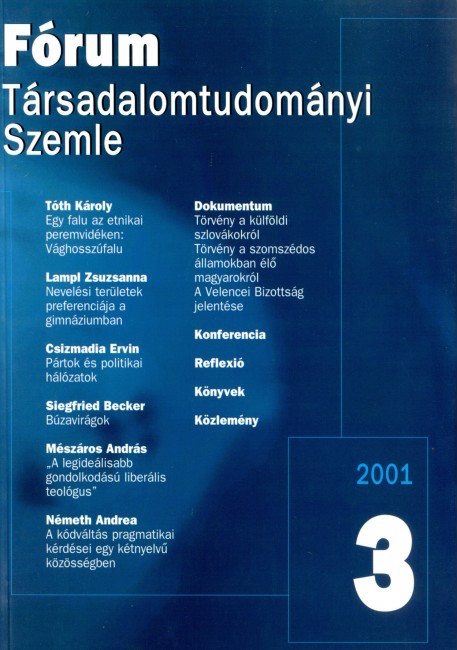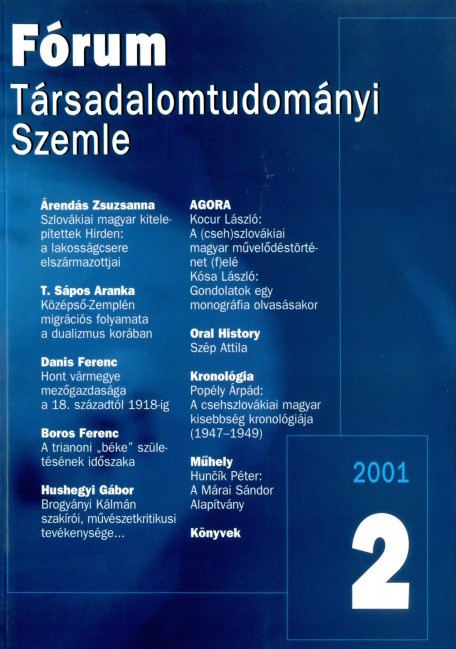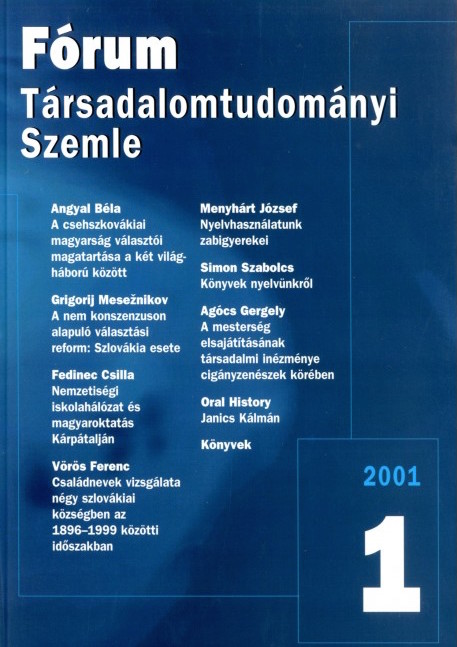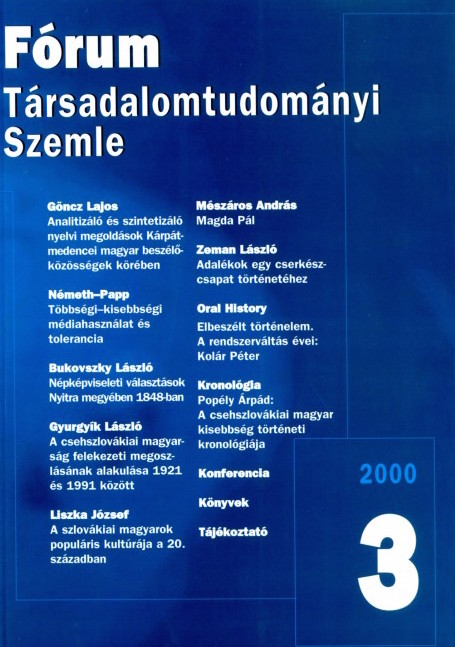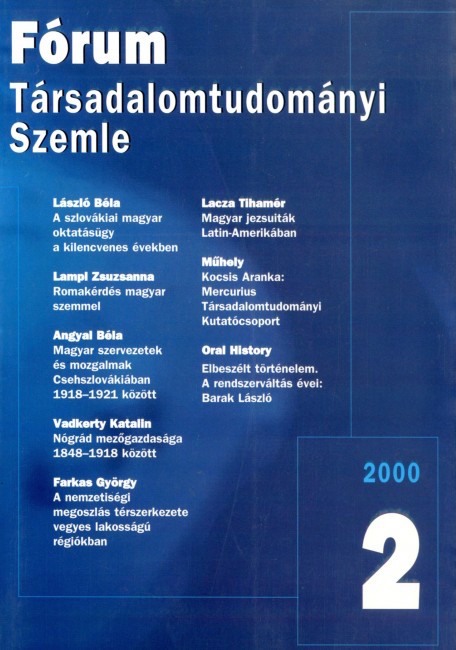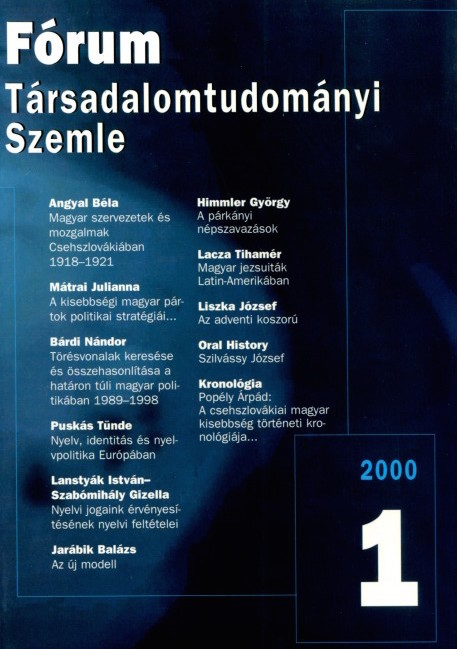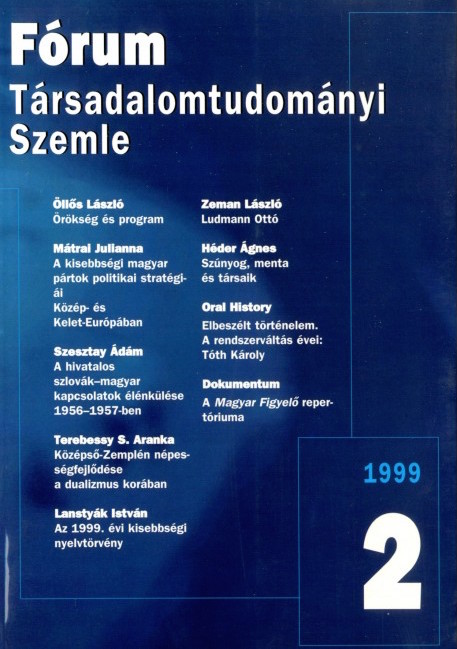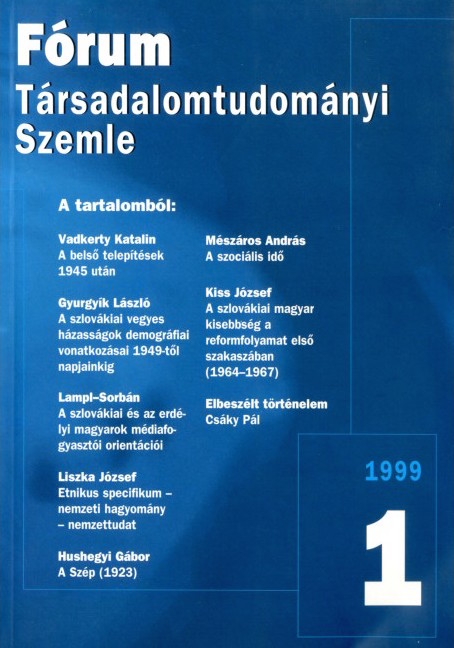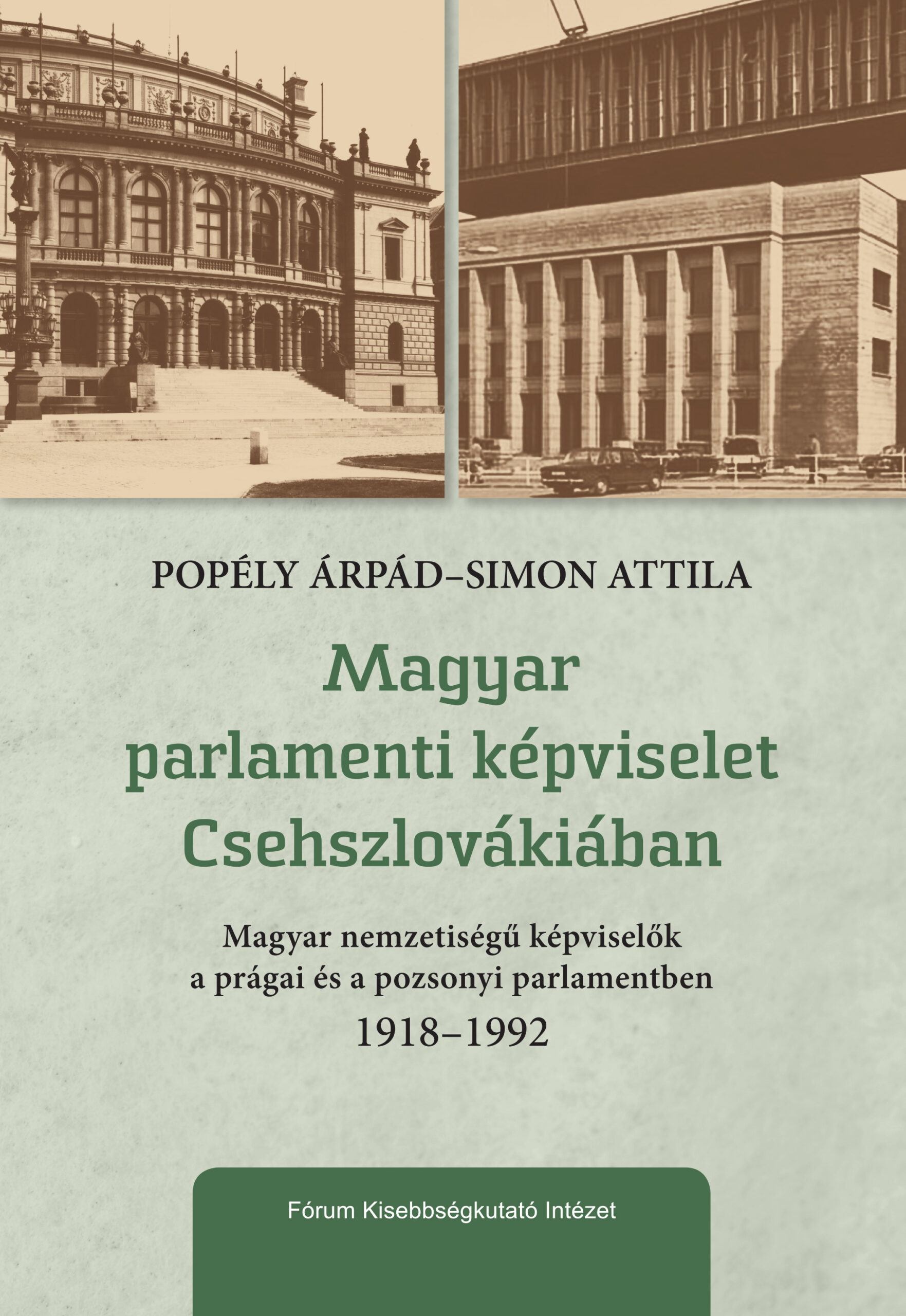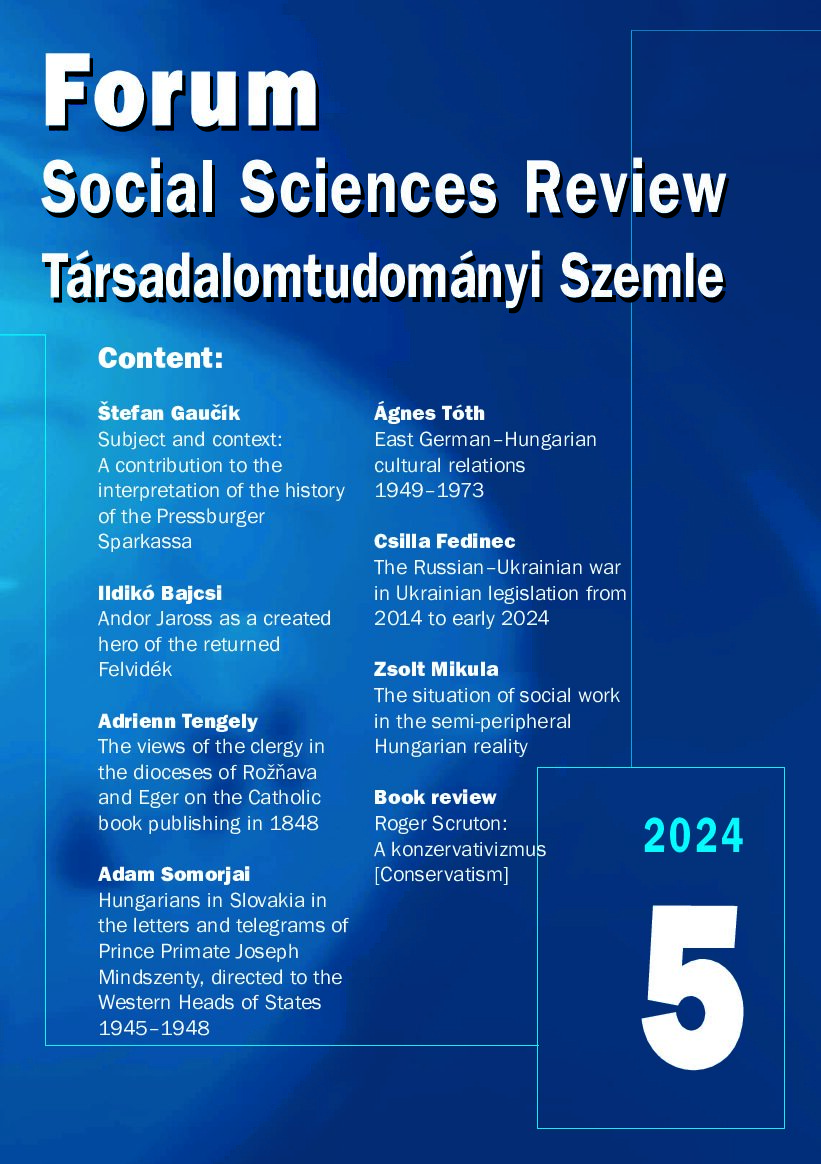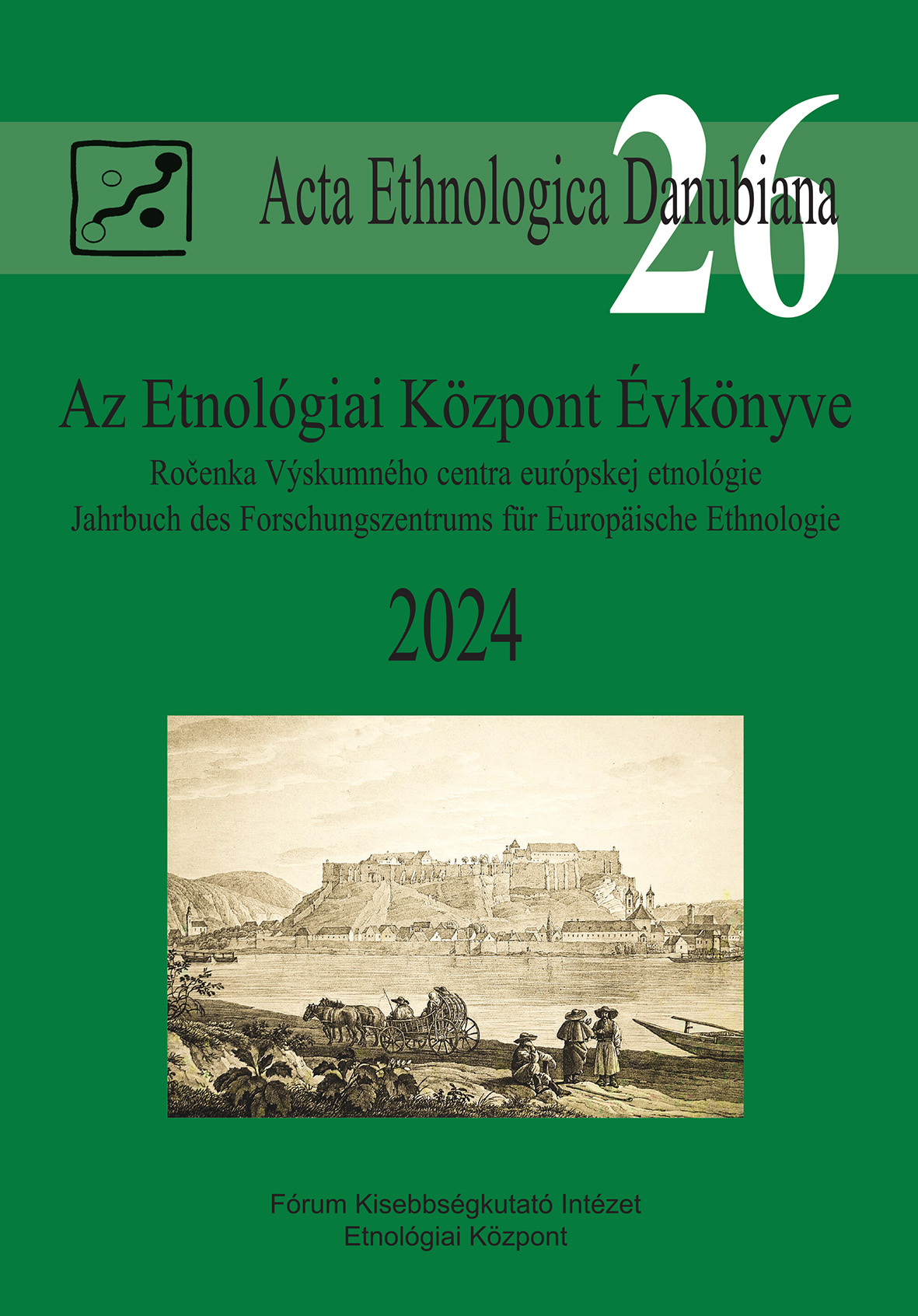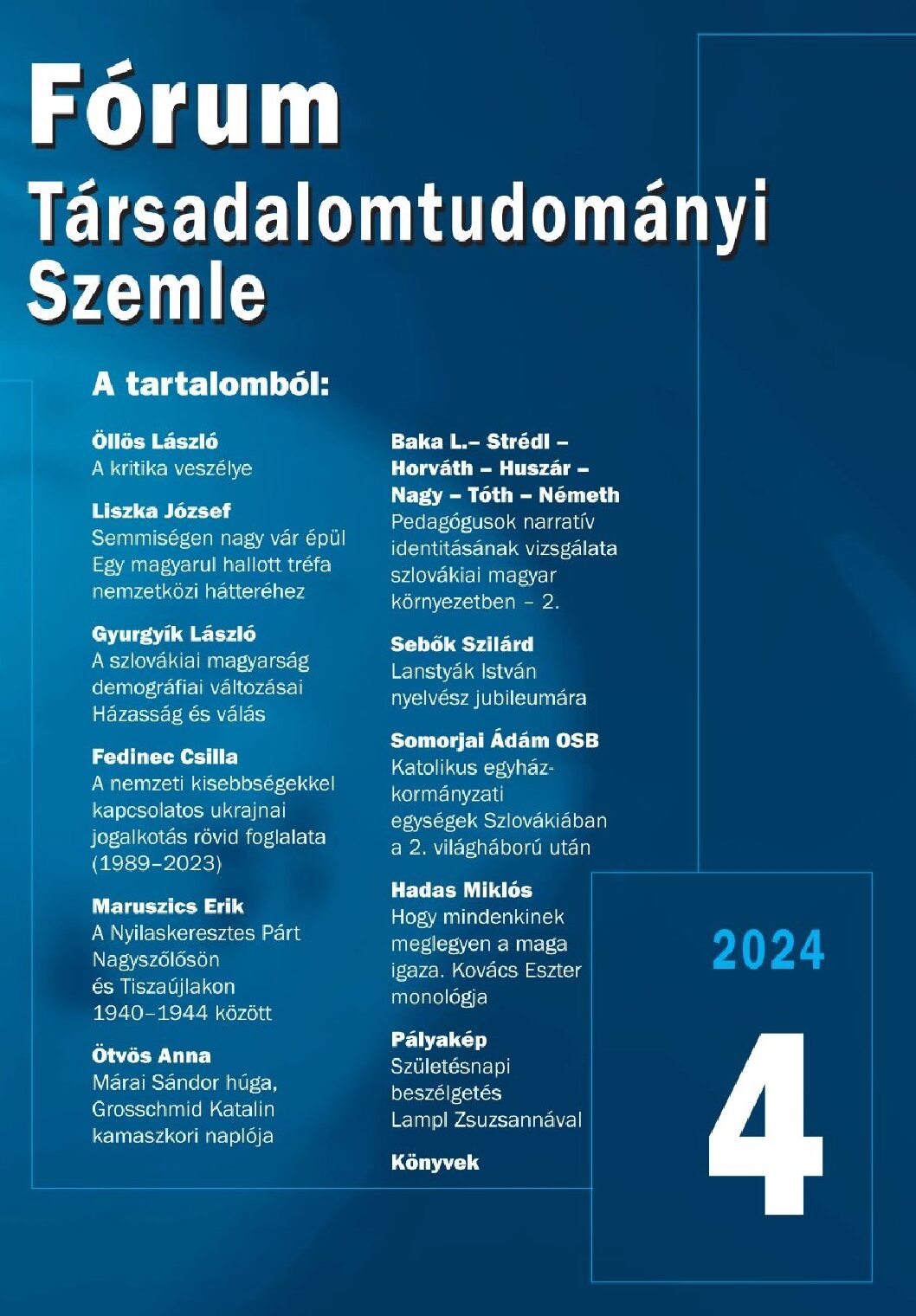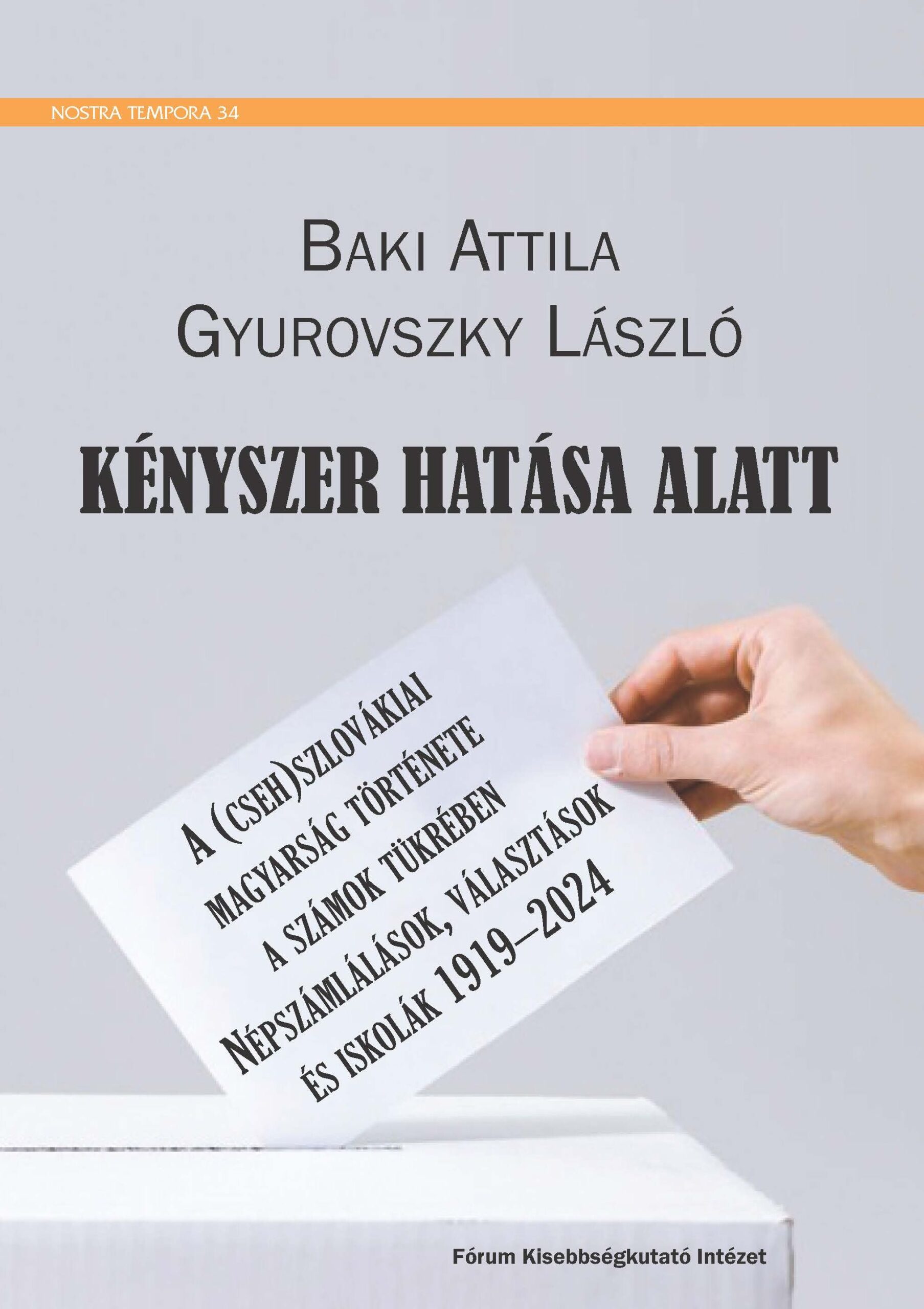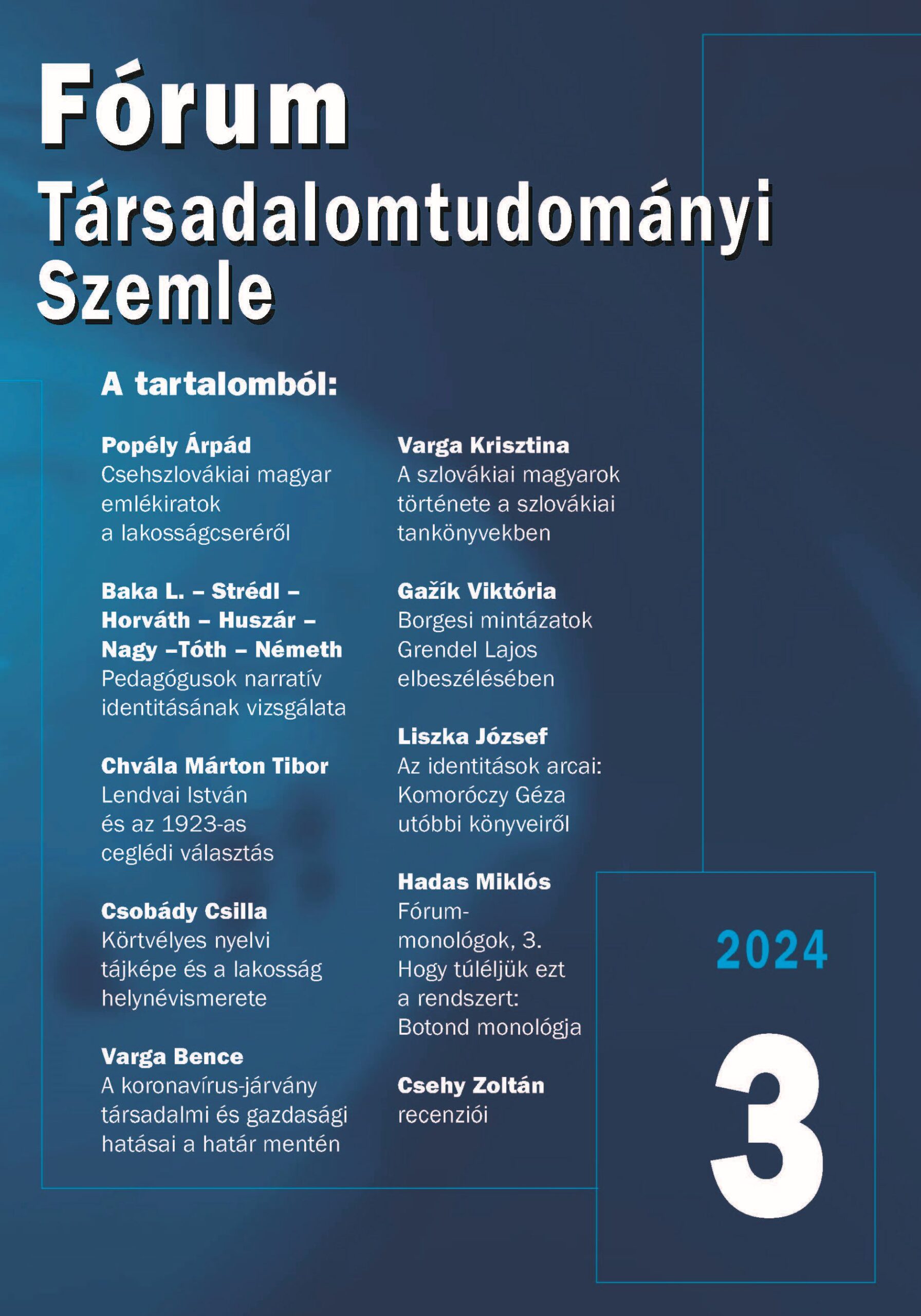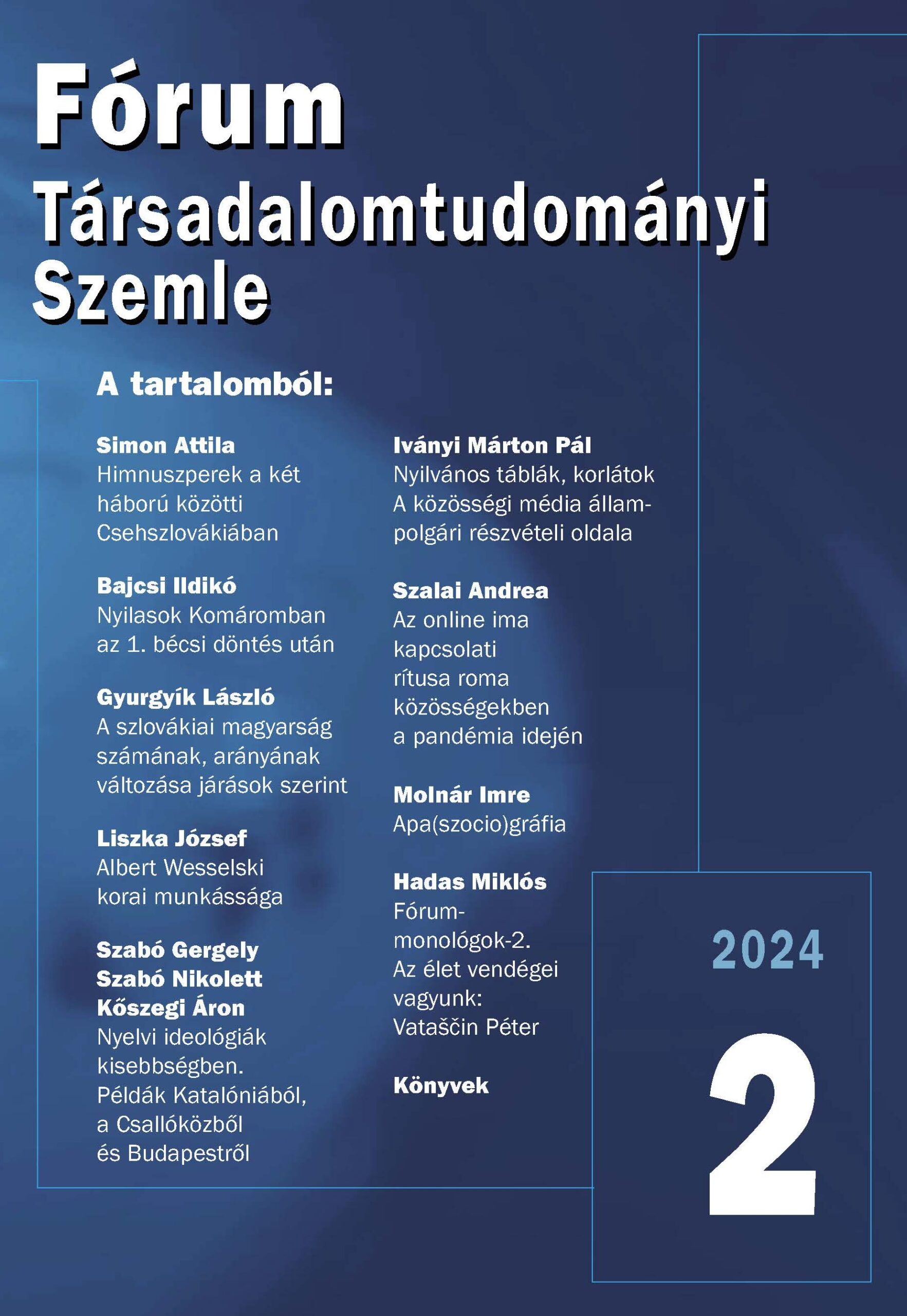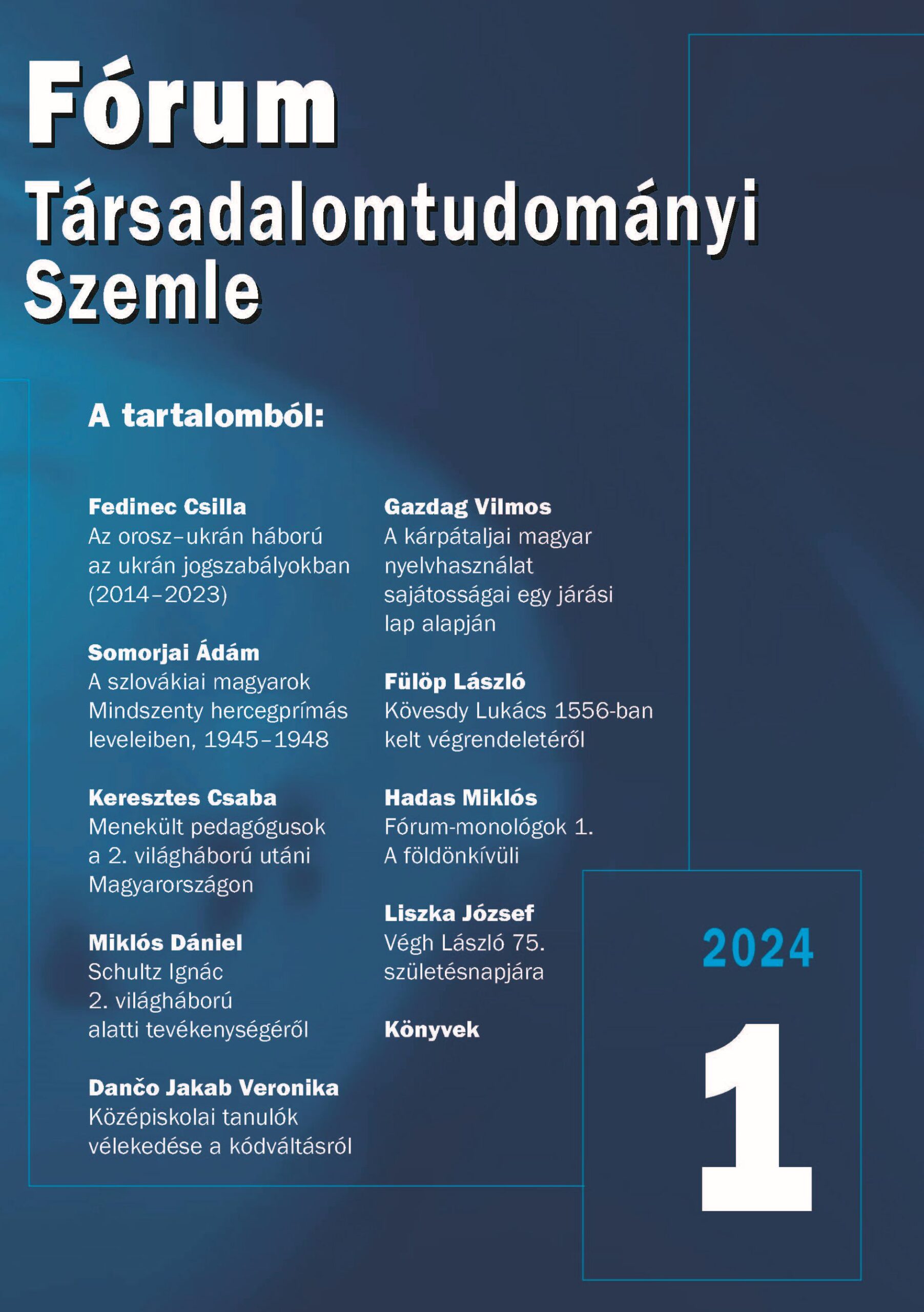Language nonformalism and formal style
This paper deals with one of the language ideologies that are used to stigmatize formal style – language nonformalism, based on quotations from two representative publications of traditional Hungarian language cultivation, the Nyelvművelő kézikönyv (Language Cultivation Handbook) and the Nyelvművelő kéziszótár (Concise Language Cultivation Dictionary). Language nonformalism is one of the language ideologies that the representatives of traditional language cultivation use to ensure that language forms they consider inappropriate are eliminated from use. Such ideologies are called language correctness ideologies. In the substantive part of the paper, first formal style is briefly described, and then, with the help of quotations from these two publications – which are said to be of outstanding importance for Hungarian language cultivation –, the ideology of language nonformalism will be presented, together with other language ideologies that can be observed in the quotations. Examples of correctness judgements on four language phenomena are given: 1. postpositions and postposition-like nouns; 2. conjunctions; 3. light verb constructions; 4. past participles used predicatively. In several instances, the validity of the language cultivators’ claims about language use is checked with data from the Hungarian National Corpus and from the publications under study themselves.
Language Ideologies and Schoolscapes in Hungarian Medium Schools beyond Hungary
The ‘schoolscape’ can be analyzed as a display or materialization of the ‘hidden curriculum’ regarding the construction of linguistic and cultural identities. In addition, we can investigate the role the schoolscape has for language education, where I argue that it constitutes a major affordance. Based on a qualitative analysis of signs and discourses – gathered during multi-sited fieldwork in 2011-2013 on Hungarian medium educational contexts in Romania, Slovakia and Ukraine – I ask, how different vernaculars, languages of learning, teaching and school administration are displayed in the schoolscape. Which language ideologies, languages, language varieties or cultural and national symbols have hegemony in the schoolscape and which get erased from it? I conclude that even though there are many Hungarian symbols and Hungarian texts on display in the investigated schools the hierarchy of languages and their status in education are still clearly displayed in the schoolscapes, which is especially evident in the placement and intended use of centrally distributed signs in the majority language.
The Problems of the Literary History of Modern Lyric. Boundary Works and Periodization
This paper offers a literary-historical approach to modern lyricism, starting from the problems that arise on the basis of periodization. It outlines the external boundaries of modernity (romanticism/modernity, modernity/postmodernity) and its internal divisions (classical modernity, avant-garde, late modernity). Meanwhile, it focuses on how the self-interpretation of poetry changed during the period encompassing modern lyricism. Indicatively, the reflection concludes with a discussion of the ways in which individual works within modern poetry, intertwined with innovation, challenge hierarchies and normative approaches. For the breaking of the signs of continuity, the dialogue and self-reflection, even contradictory positioning of isms and concrete works cannot be eliminated from the processes in question, just as it is not always possible to derive them from a stable, central thesis. The dilemma of whether a comprehensive picture of modern lyric poetry can be developed at all can well be called the greatest paradox in the history of lyric poetry.
Irredentism, Being a Minority, and Revision From Different Perspectives A Picture of Southern Slovakia in Magyar Élet
The Hungarian nationhood policies review, Magyar Élet, published between 1936 and 1944, was linked through its owners to racialist groups and the Hungarian Fraternal Community (Magyar Testvéri Közösség), which was secretly active during the period and became known for the 1947 mock trial, and through its authors to the popular movement. What makes the journal’s view of Felvidék (the present-day Southern Slovakia) interesting is the diversity of contemporary perspectives. The articles present the issues of irredentism, being a minority and revision along different narratives, motivated mainly by generational differences between the authors. While the representatives of the generation with personal memories of the Austro-Hungarian Empire devoted their writings to the sense of loss caused by the Treaty of Trianon and the failure to accept the change of borders, the younger authors, while drawing a detailed picture of the economic, social and cultural life of the annexed part of the country, argued that the common interest of Hungarians in the motherland and in Czechoslovakia was not to resurrect the past, but to create a Hungary with a renewed social and political system.
Investments of the Hungarian State Construction Office in the Parts of Zemplén County That Returned After the First Vienna Award
The State Construction Office, established during the dualism period, was responsible for the construction and maintenance of state, county, and municipal roads, as well as for the planning and control of public roads. These included the construction and renovation of schools, hospitals, churches, spas, offices, and convents, which were also managed by the office’s engineers. The study examines such projects in the parts of Zemplén County that were returned to Hungary from Czechoslovakia in 1938. After the border change, the review of the condition of roads and bridges started immediately, and with it the construction of secondary roads to meet the new traffic conditions and the improvement of the quality of access roads to villages. School construction and other investments were also undertaken. The aim was not only to improve the road network but also to create job opportunities for the population.
The Beginnings of Tourism in Gömör – In Honor of the 150th Anniversary the Hungarian Carpathian Association
It is widely known that the nobles and citizens of Gömör—depending on their pecuniary standing—were attracted to globetrotting, had a propensity for roaming exotic landscapes, for discovering unknown cultures and for absorbing the magic of the fabulous East. But what was the situation on the local level? In this study, we will briefly look at how tourism as a sport and leisure activity developed in Gömör County, how this unusual pastime developed into a national and then local phenomenon, which were the most attractive destinations for excursions, and from where and how many visitors did it attract to the region?



